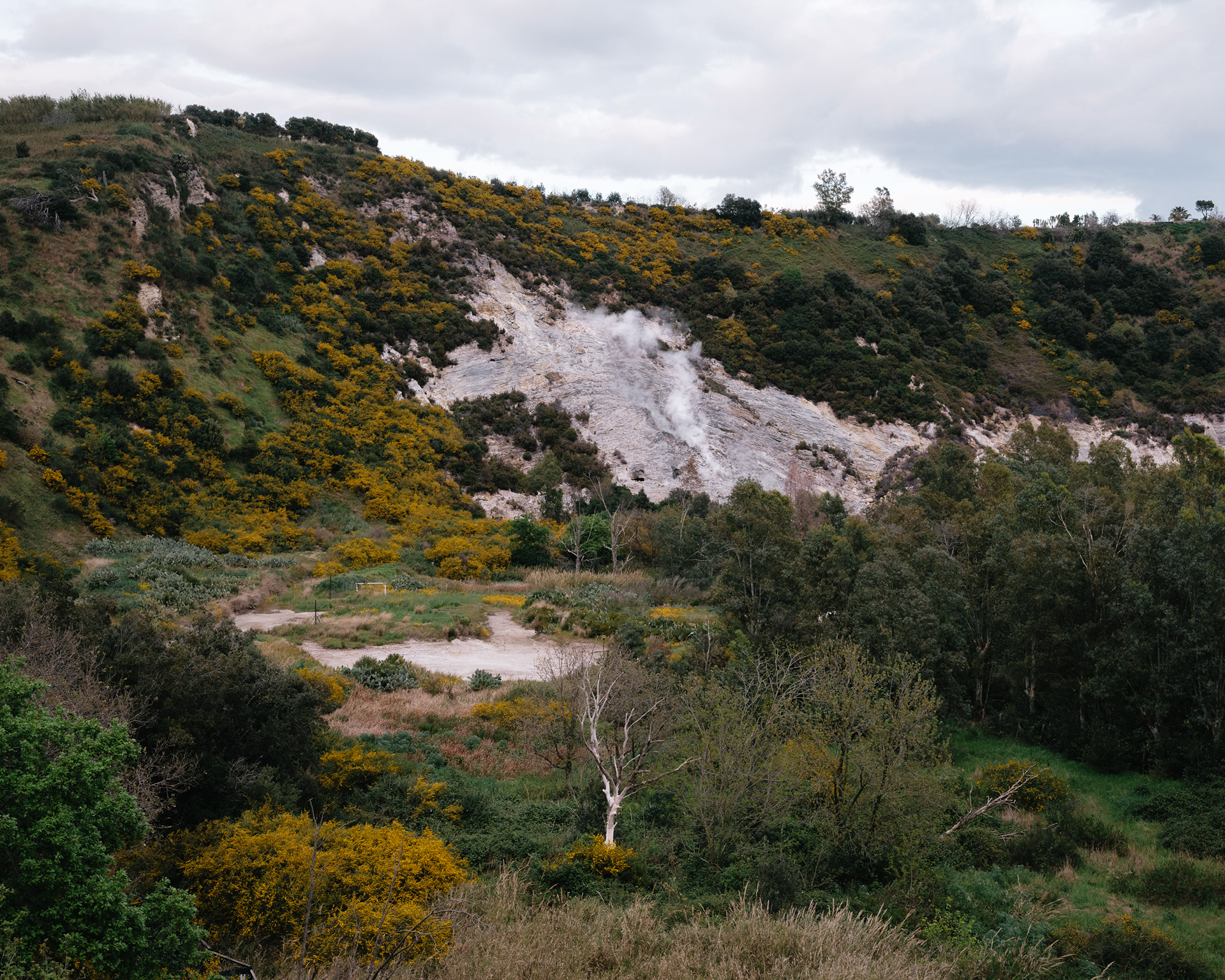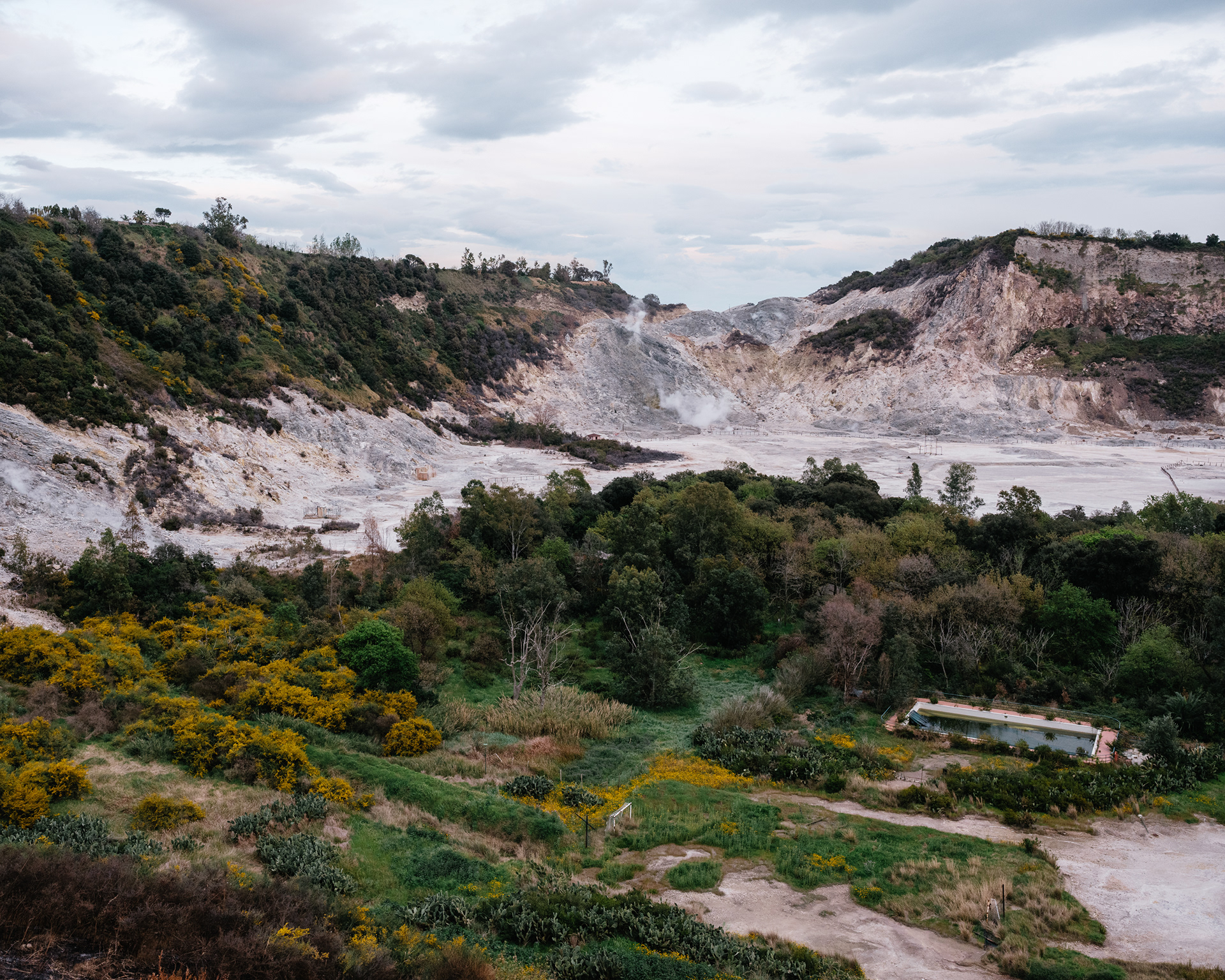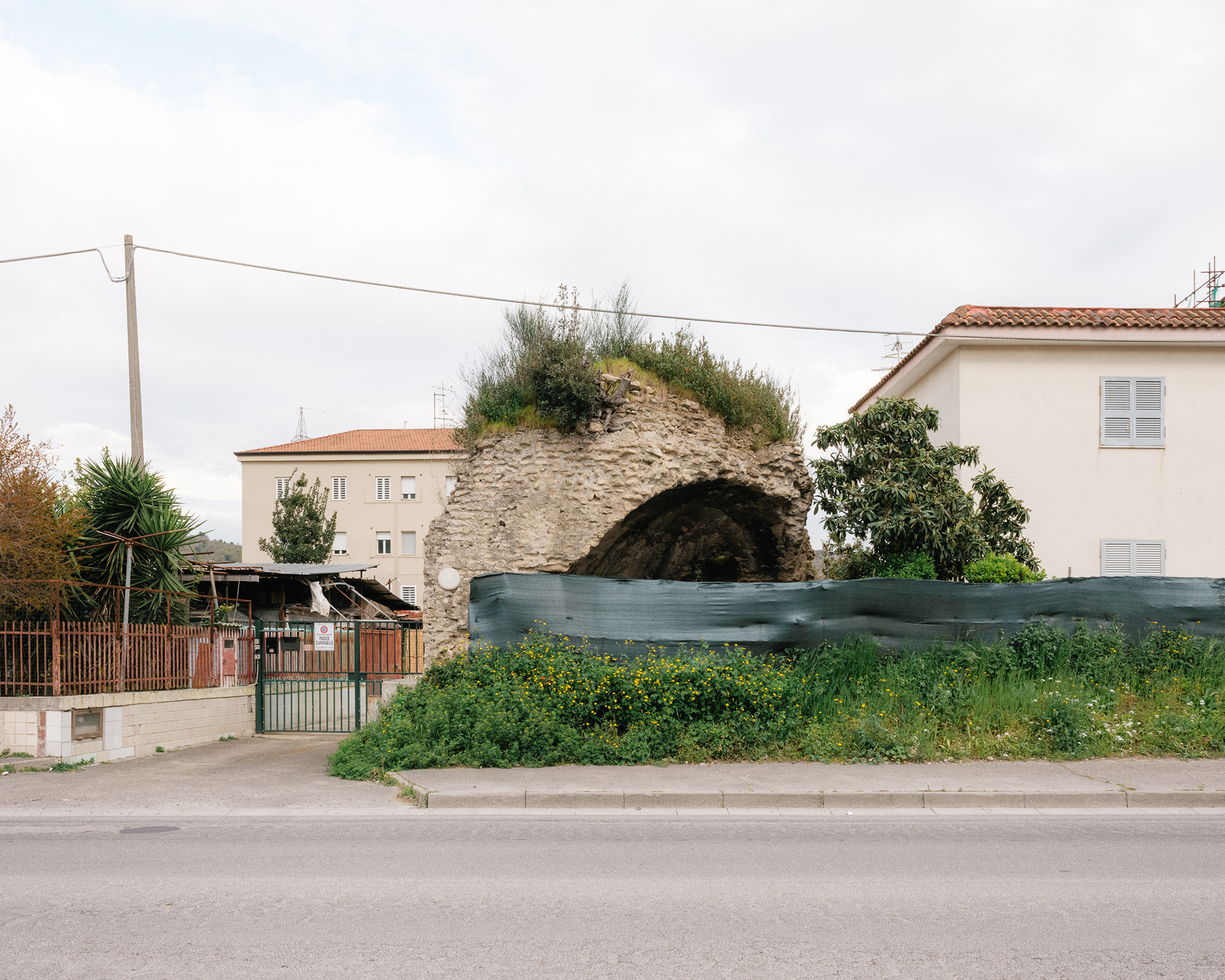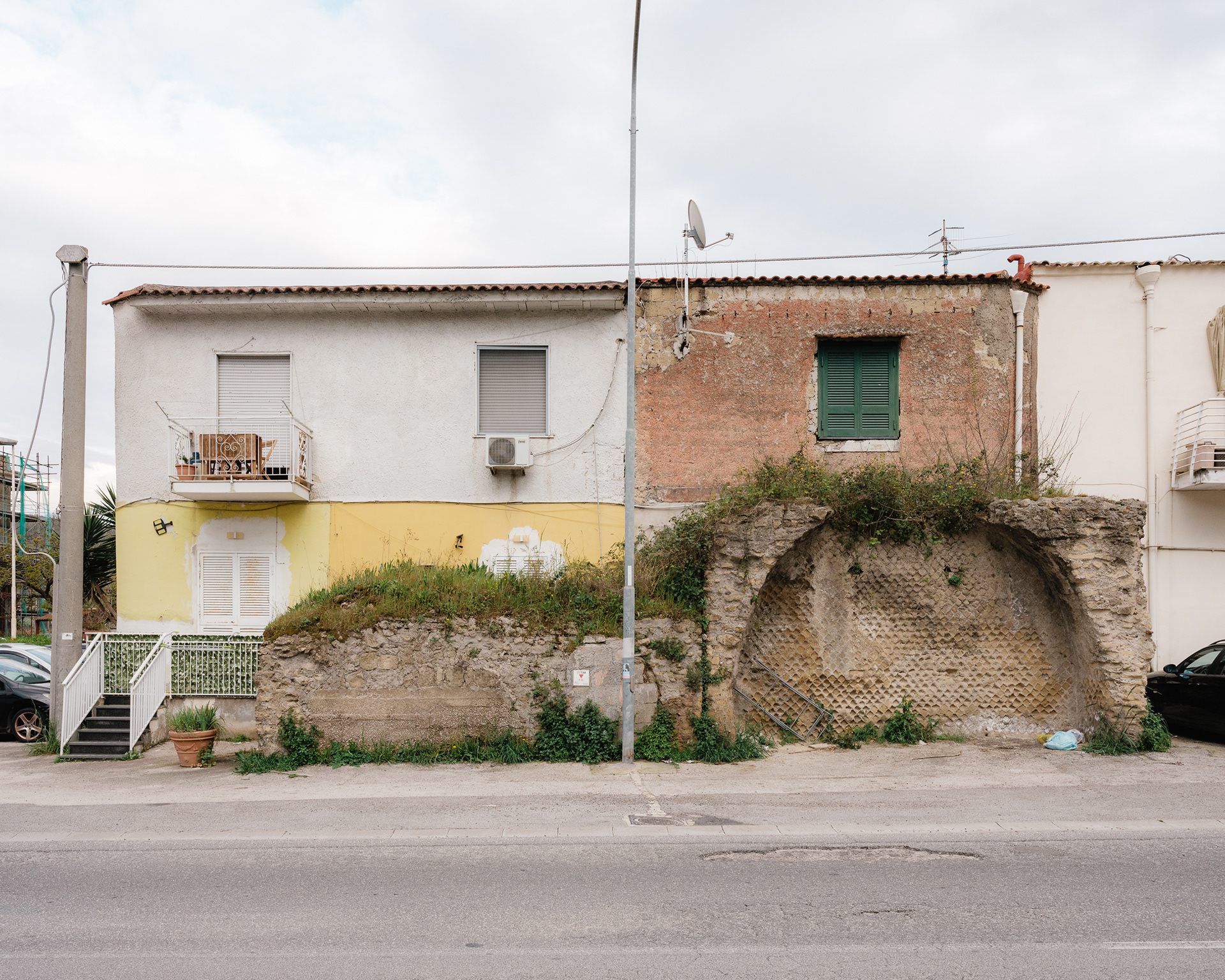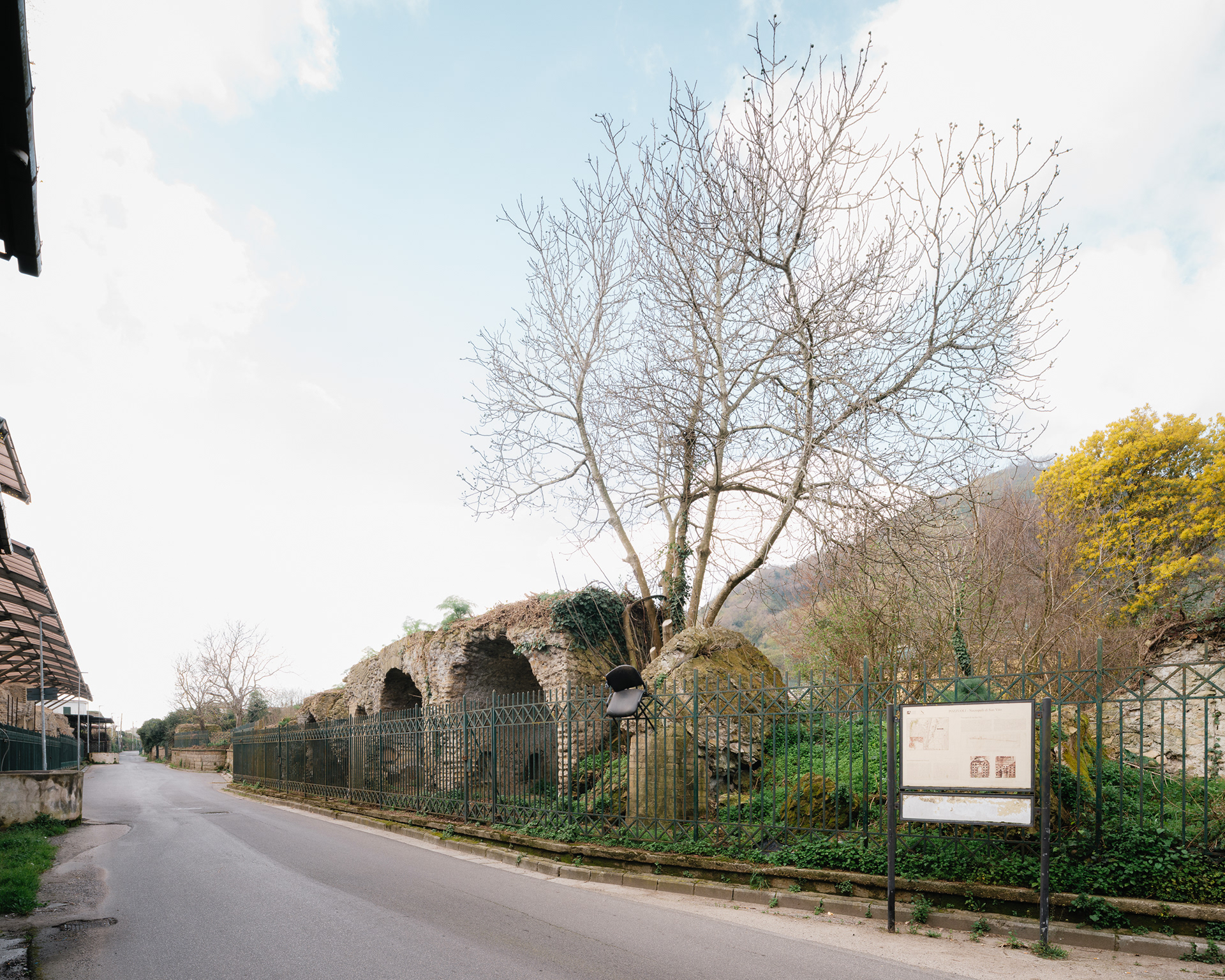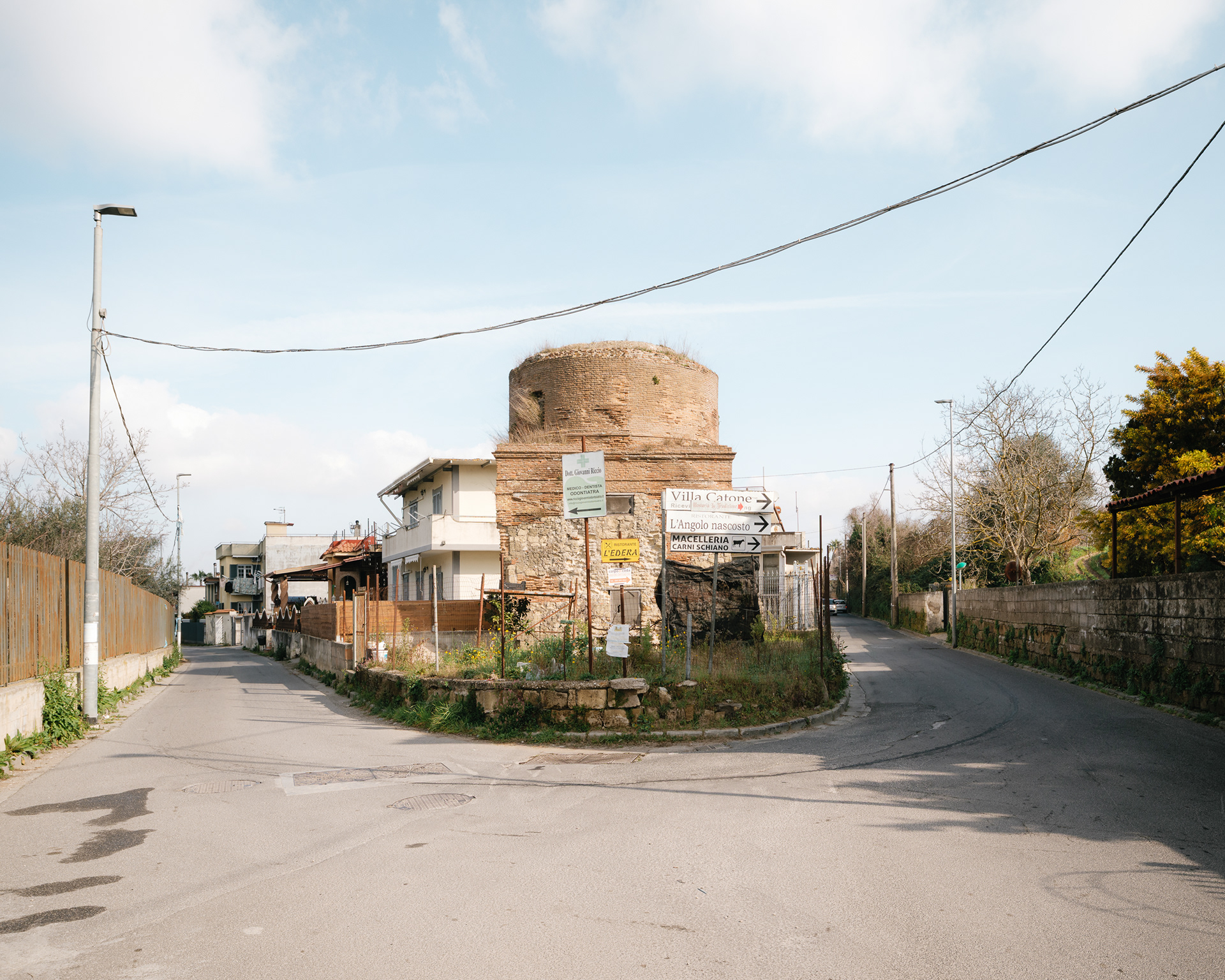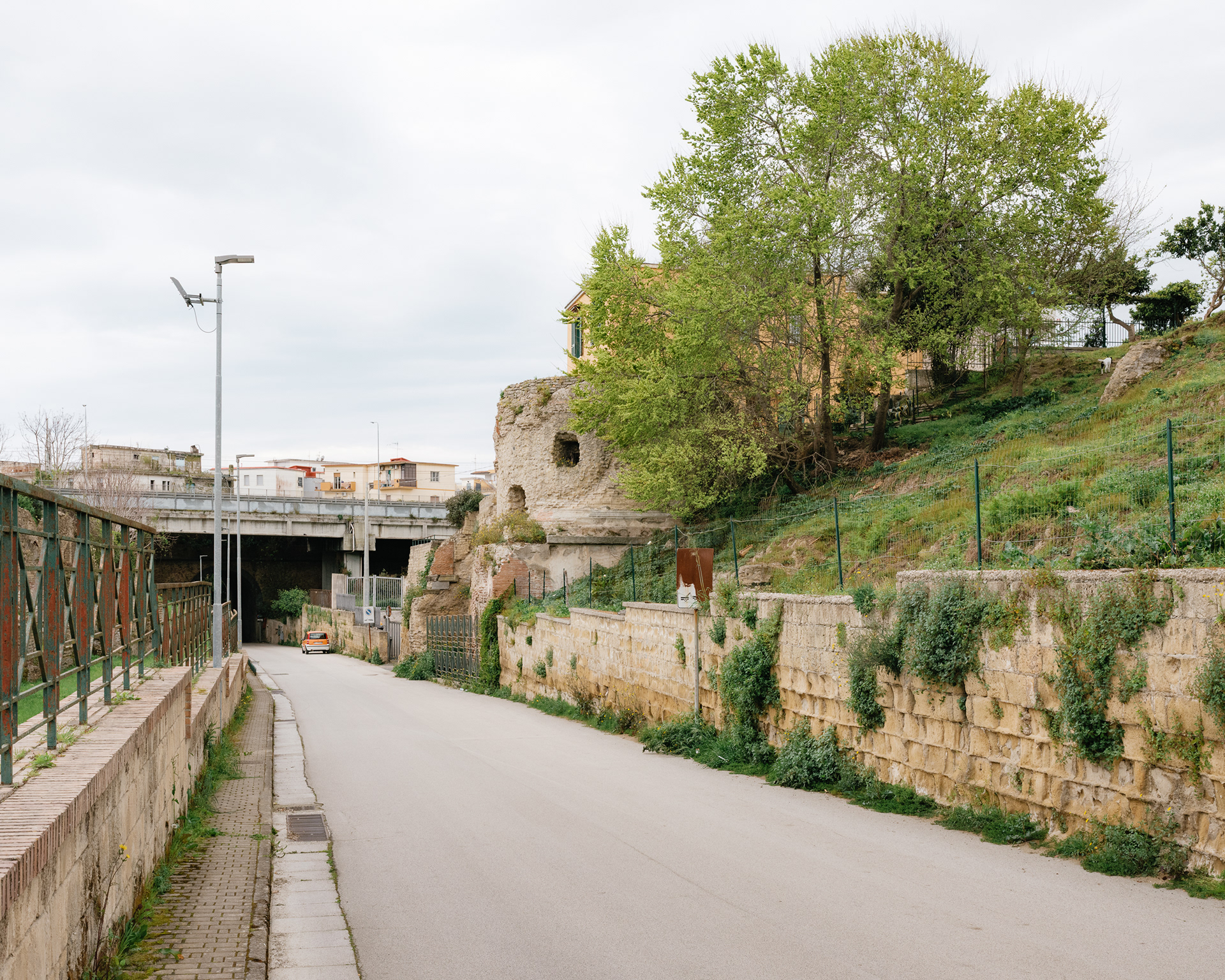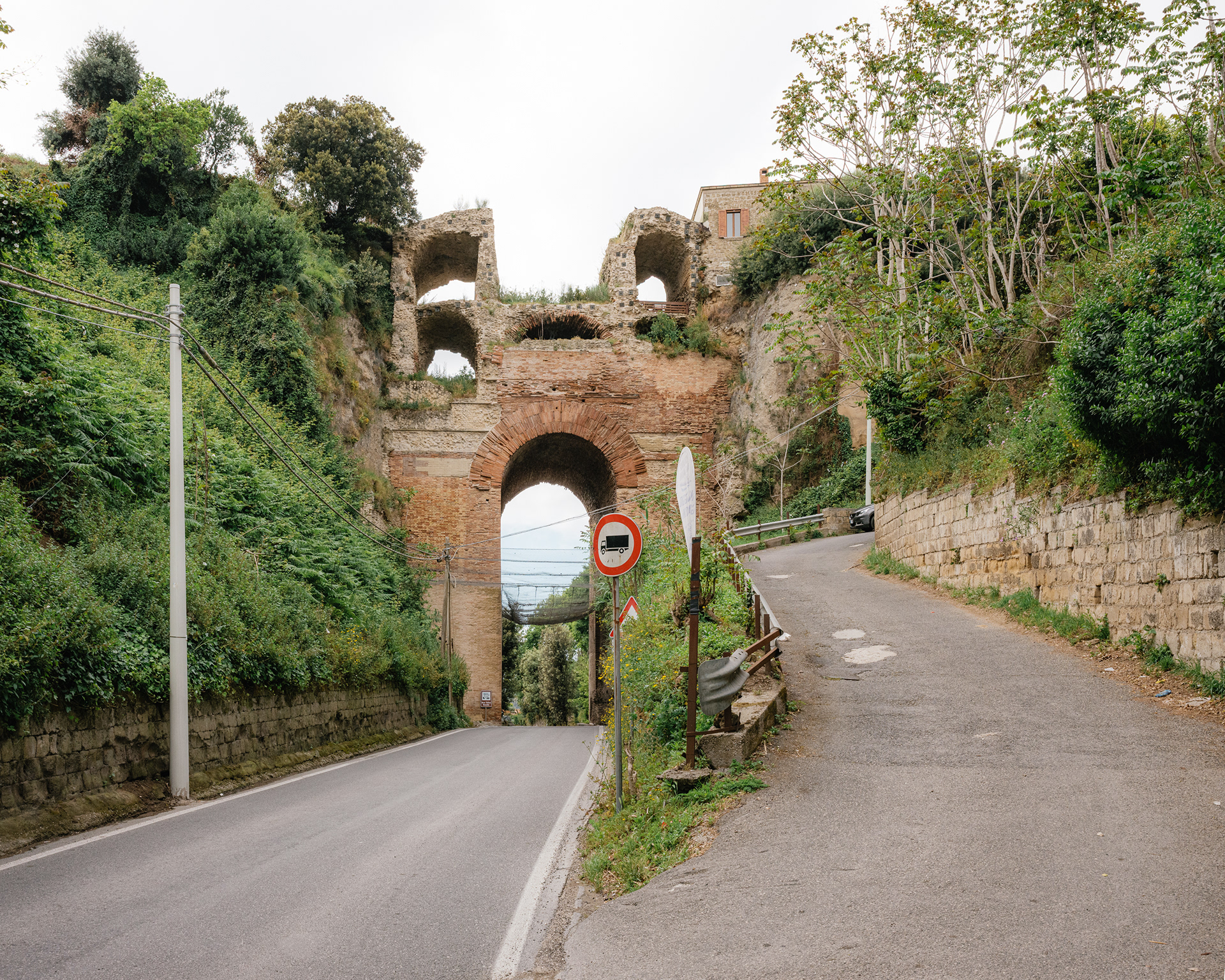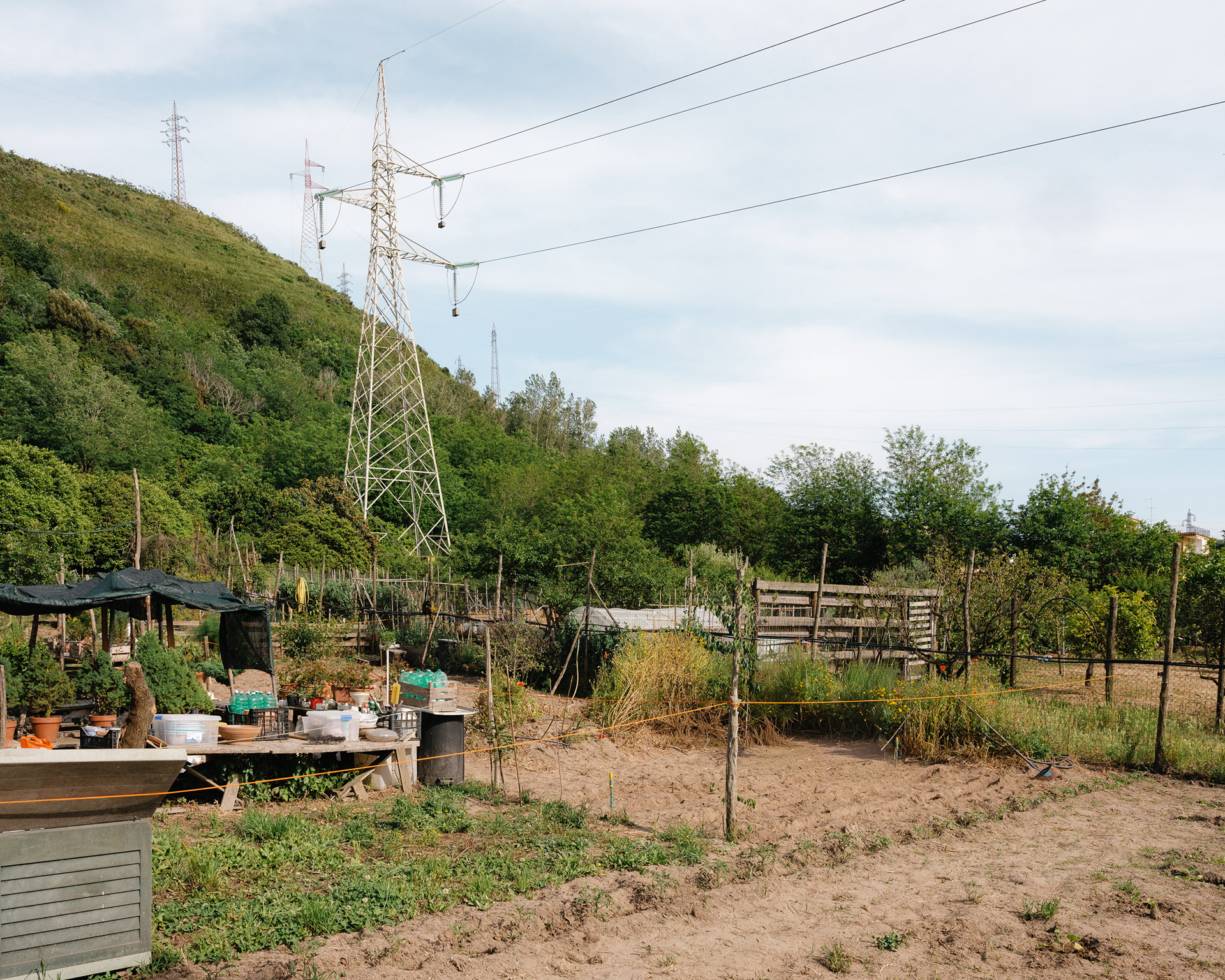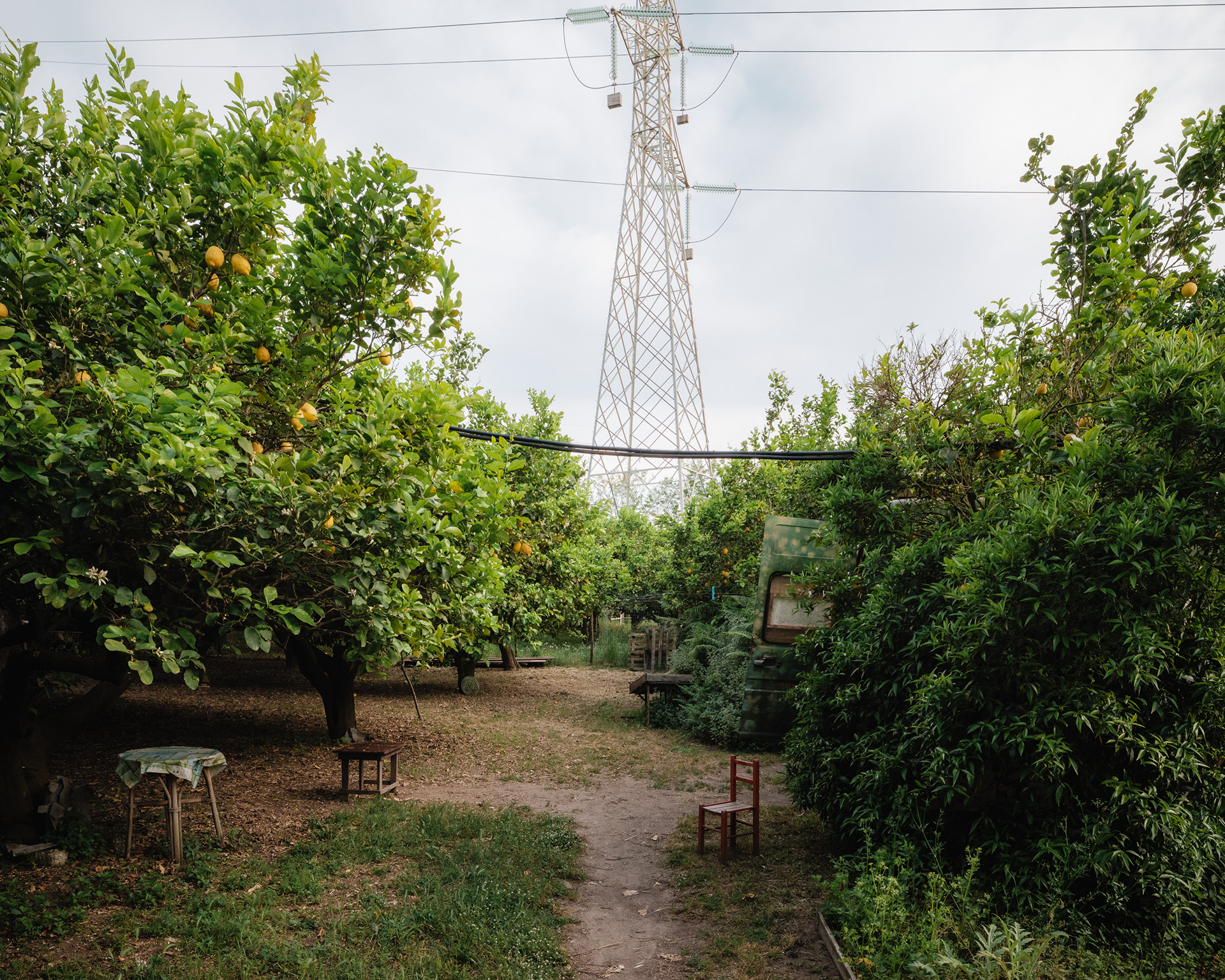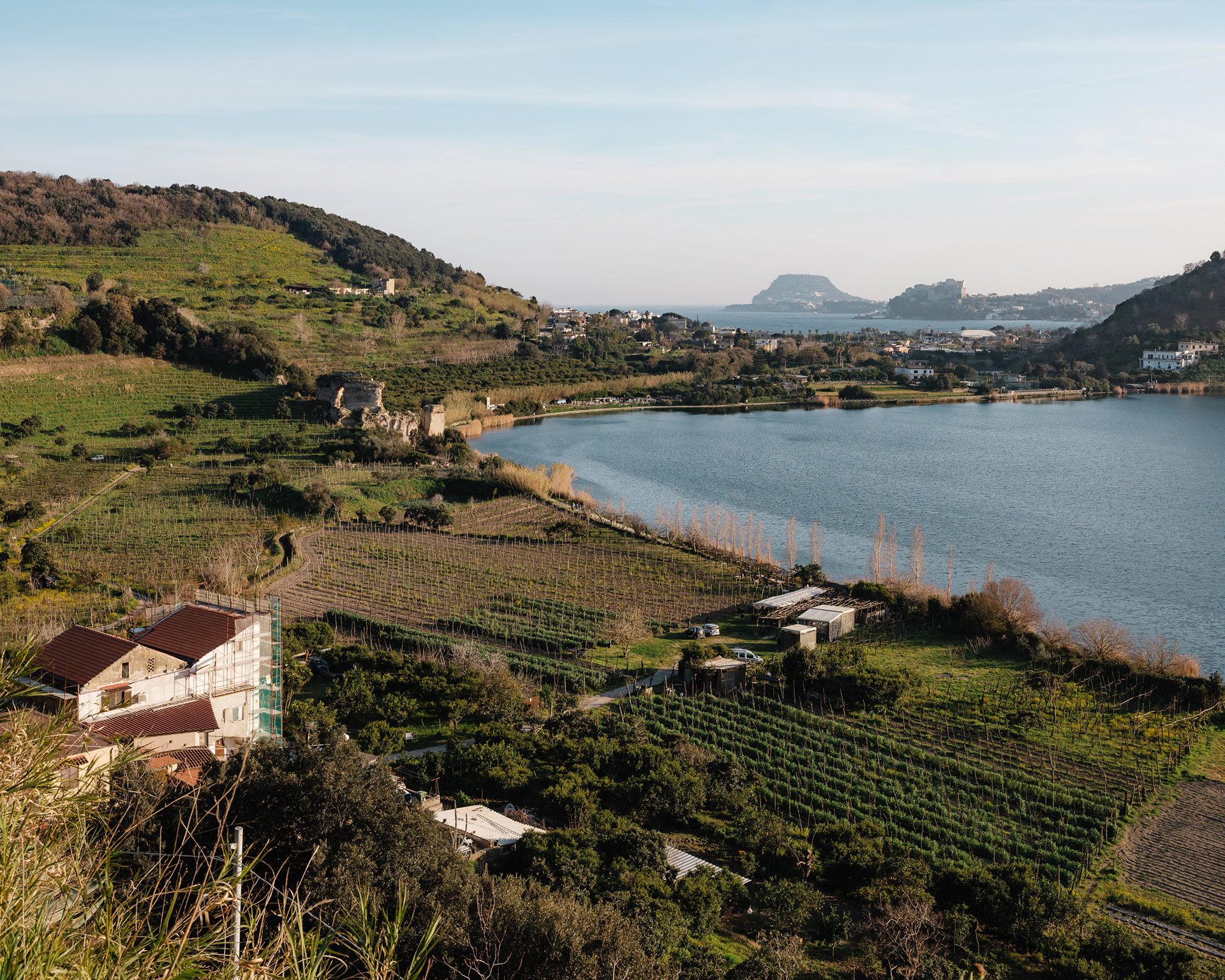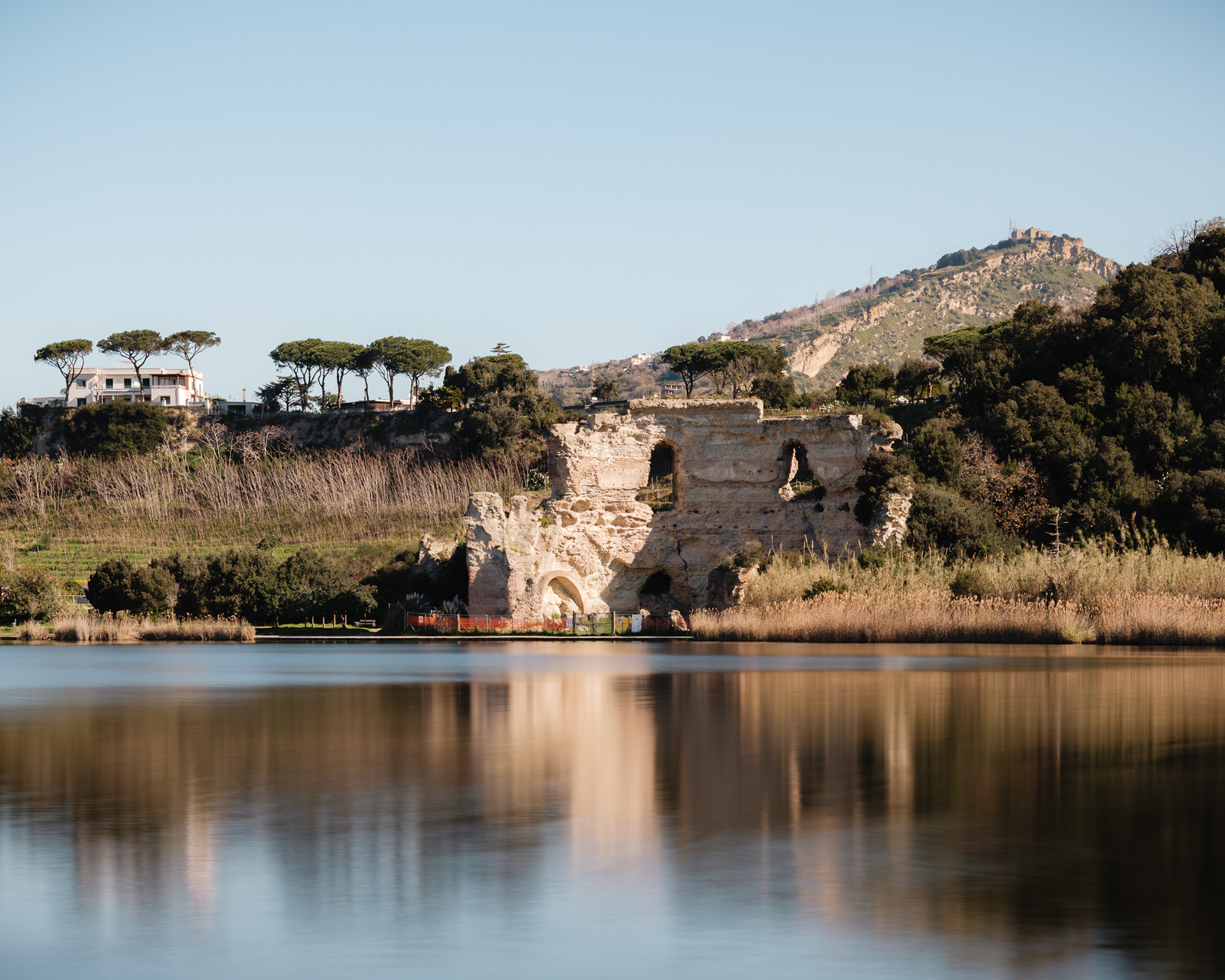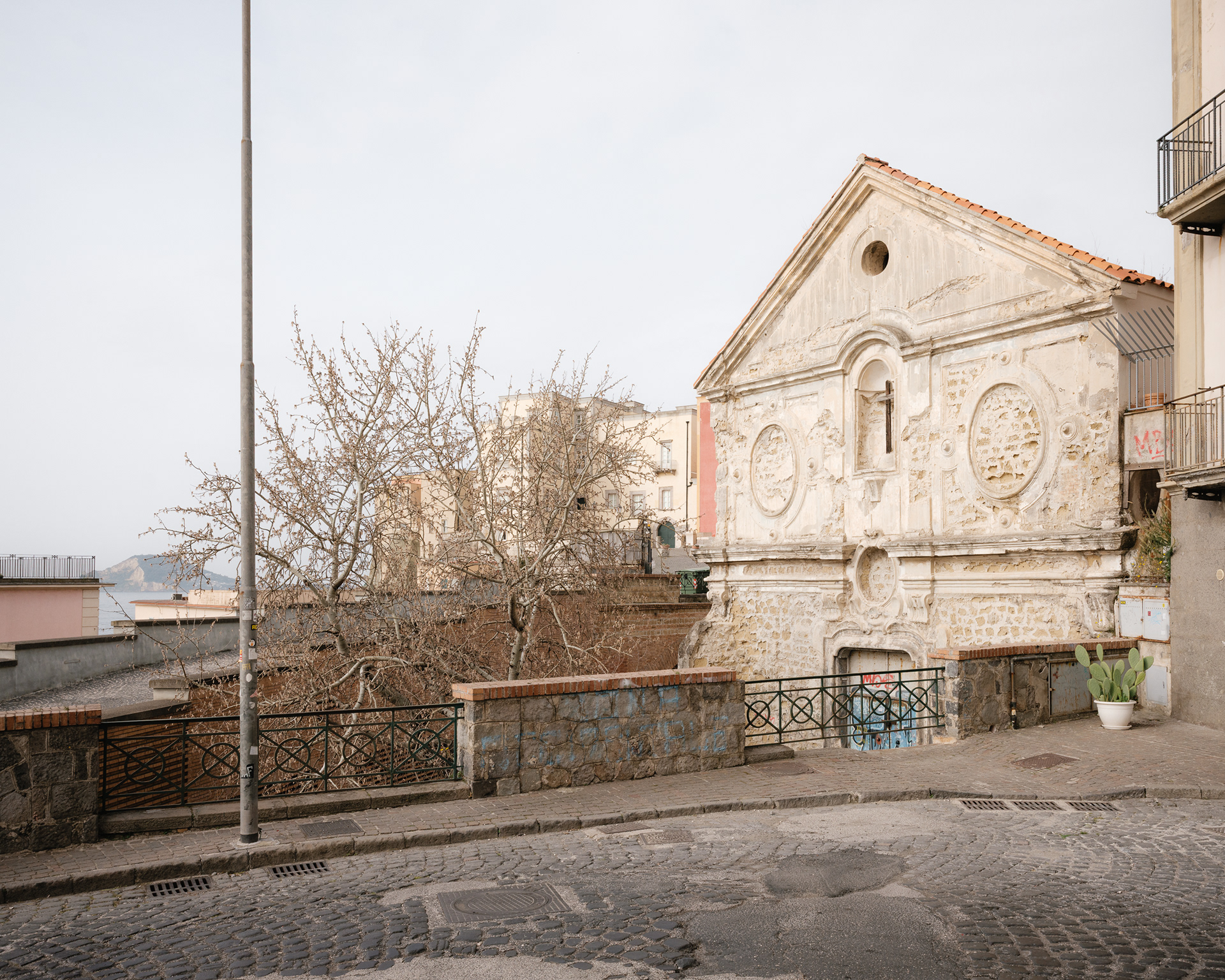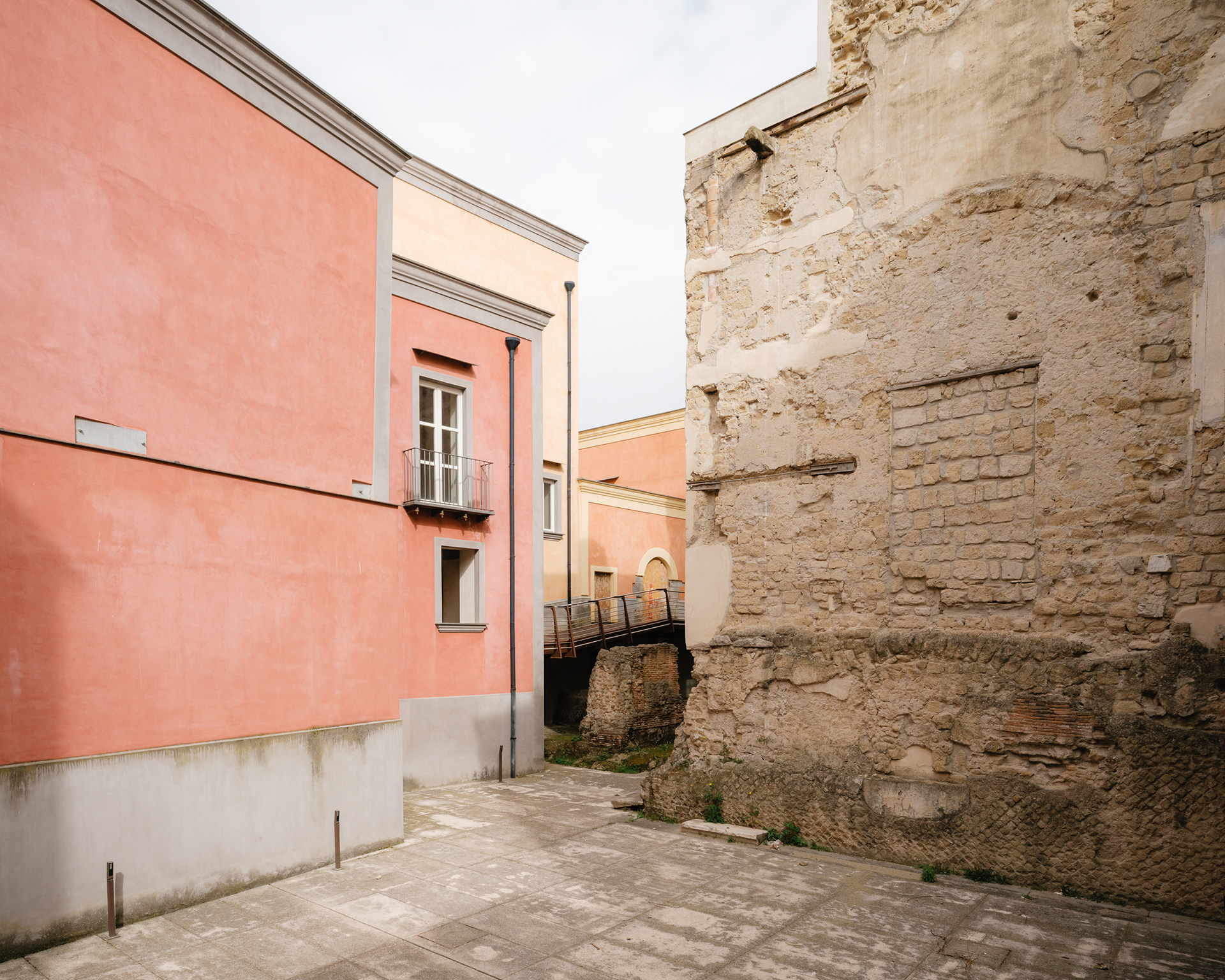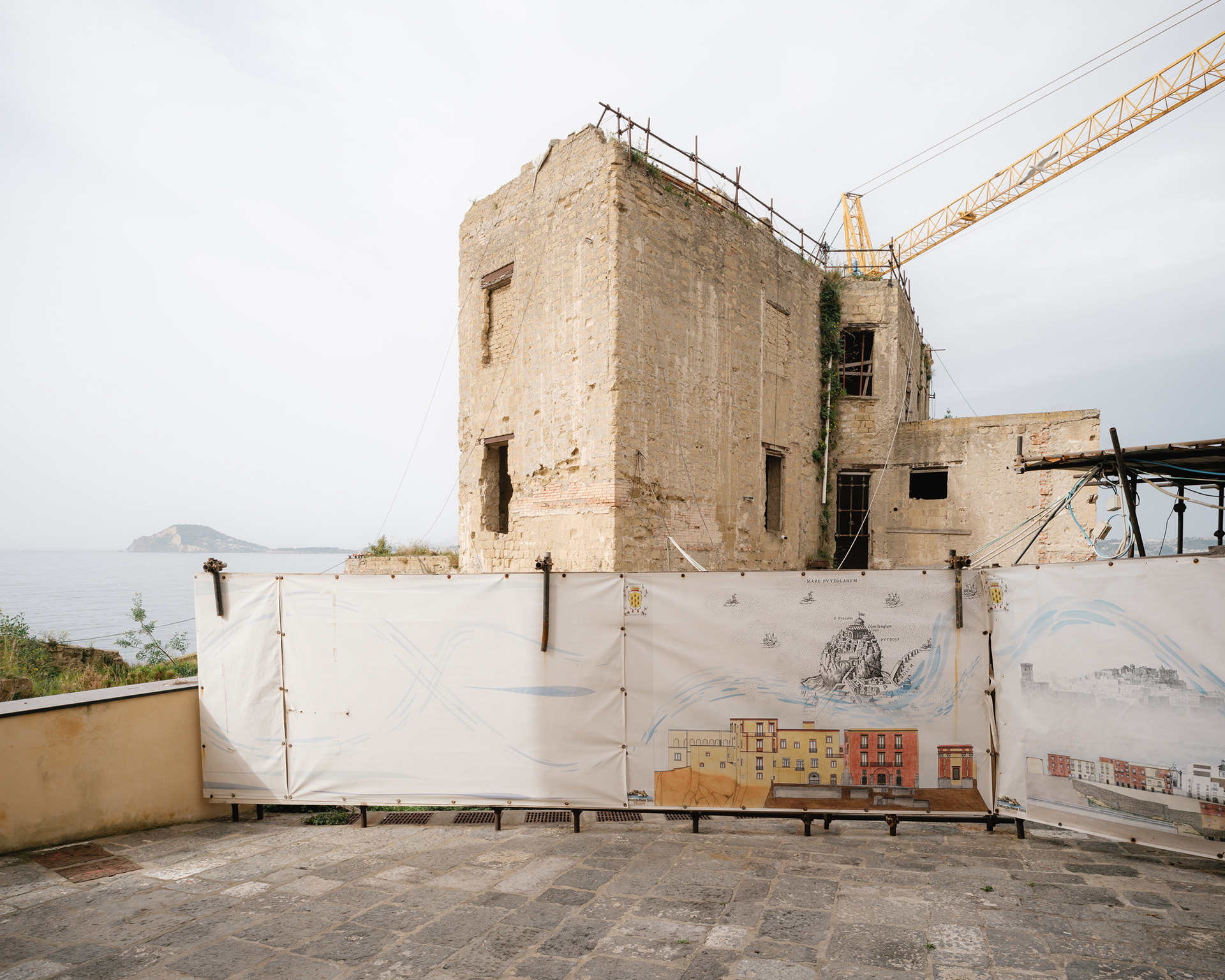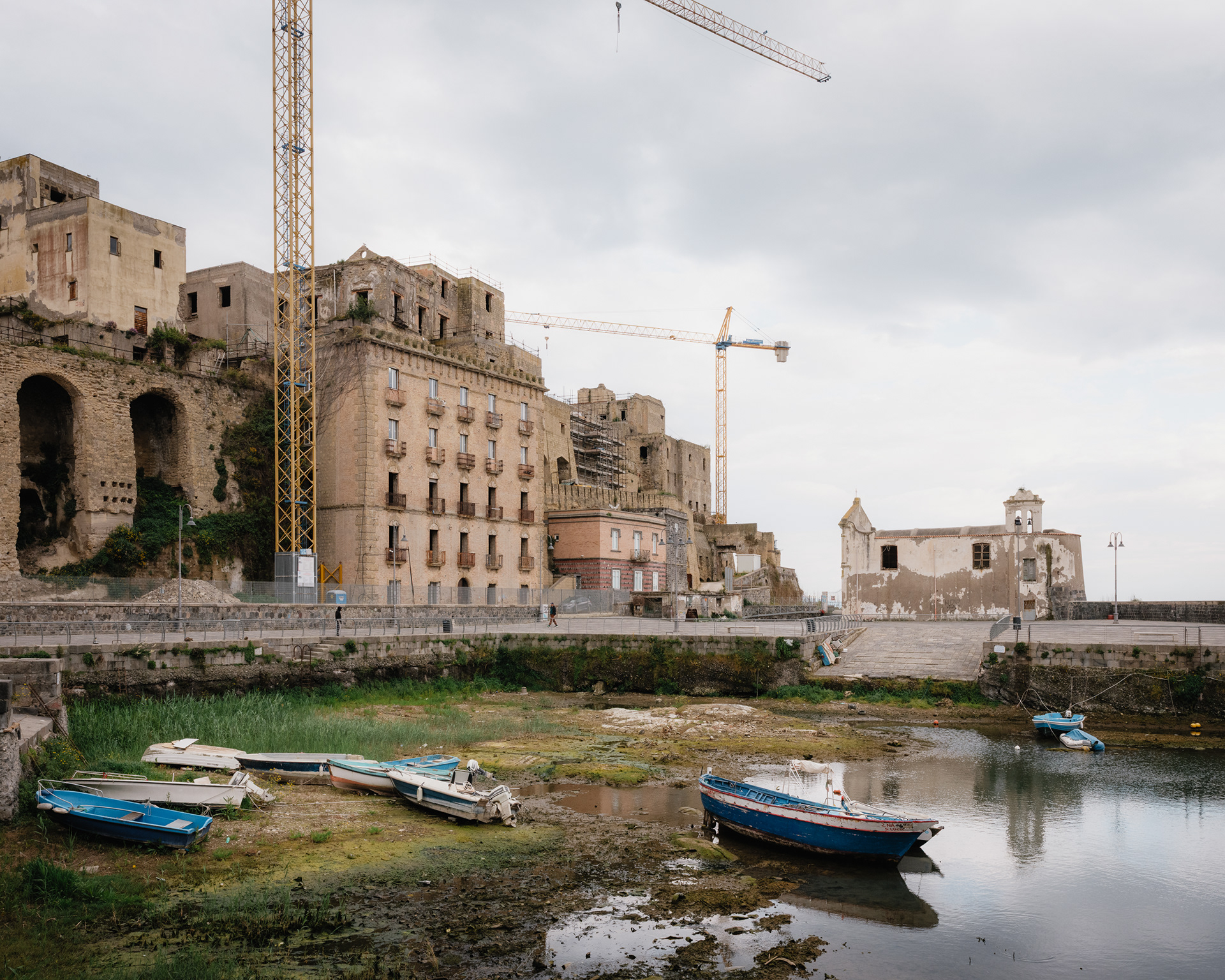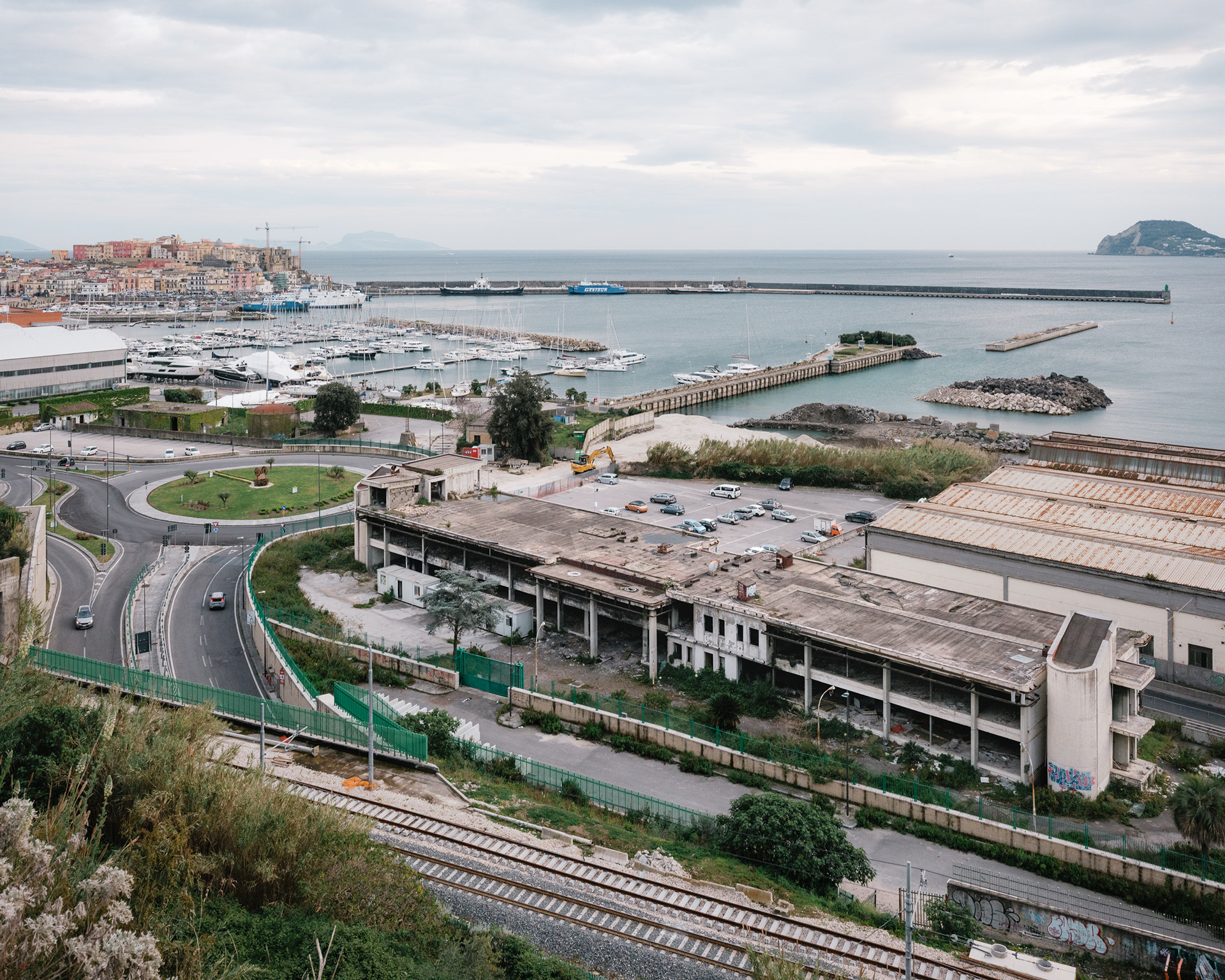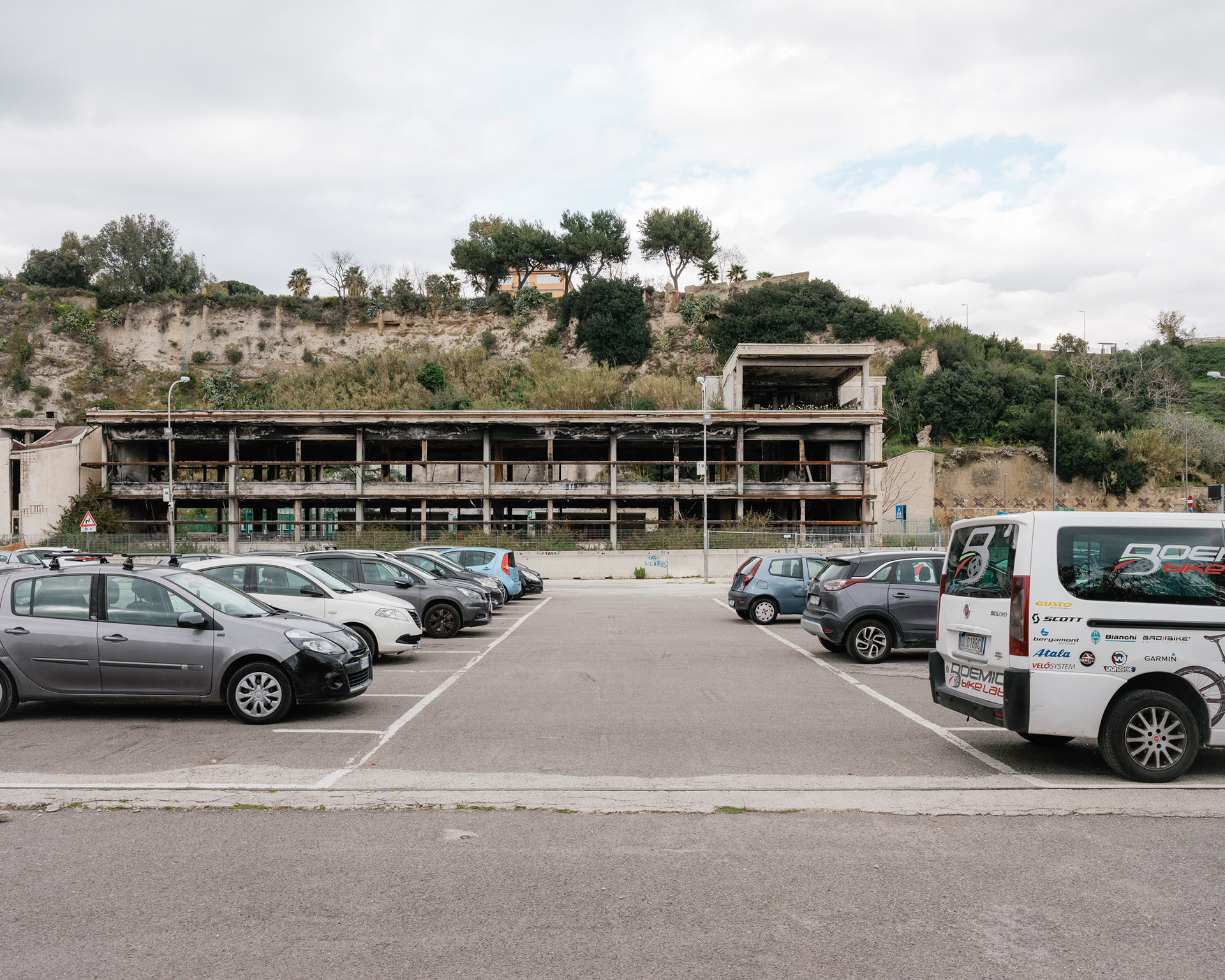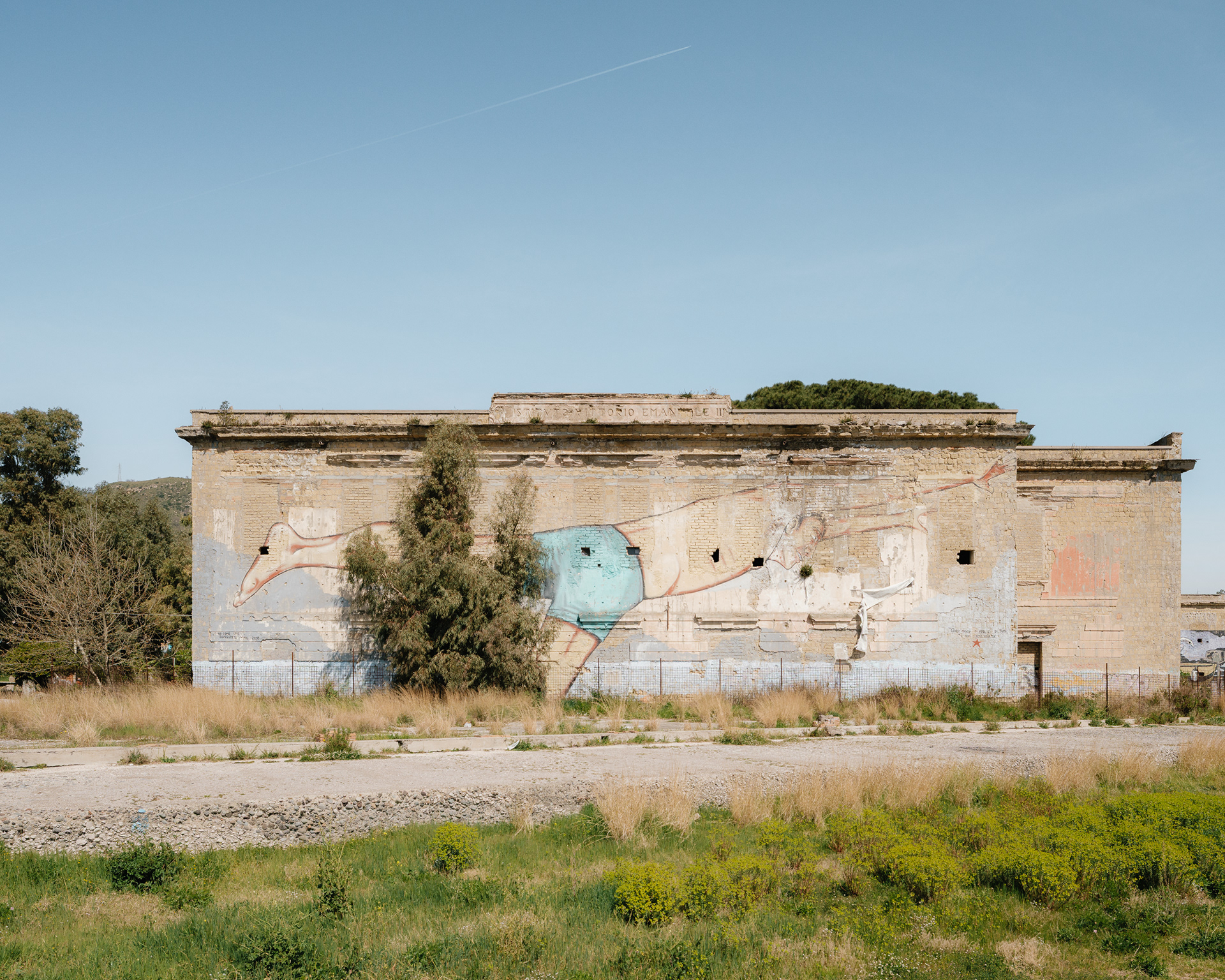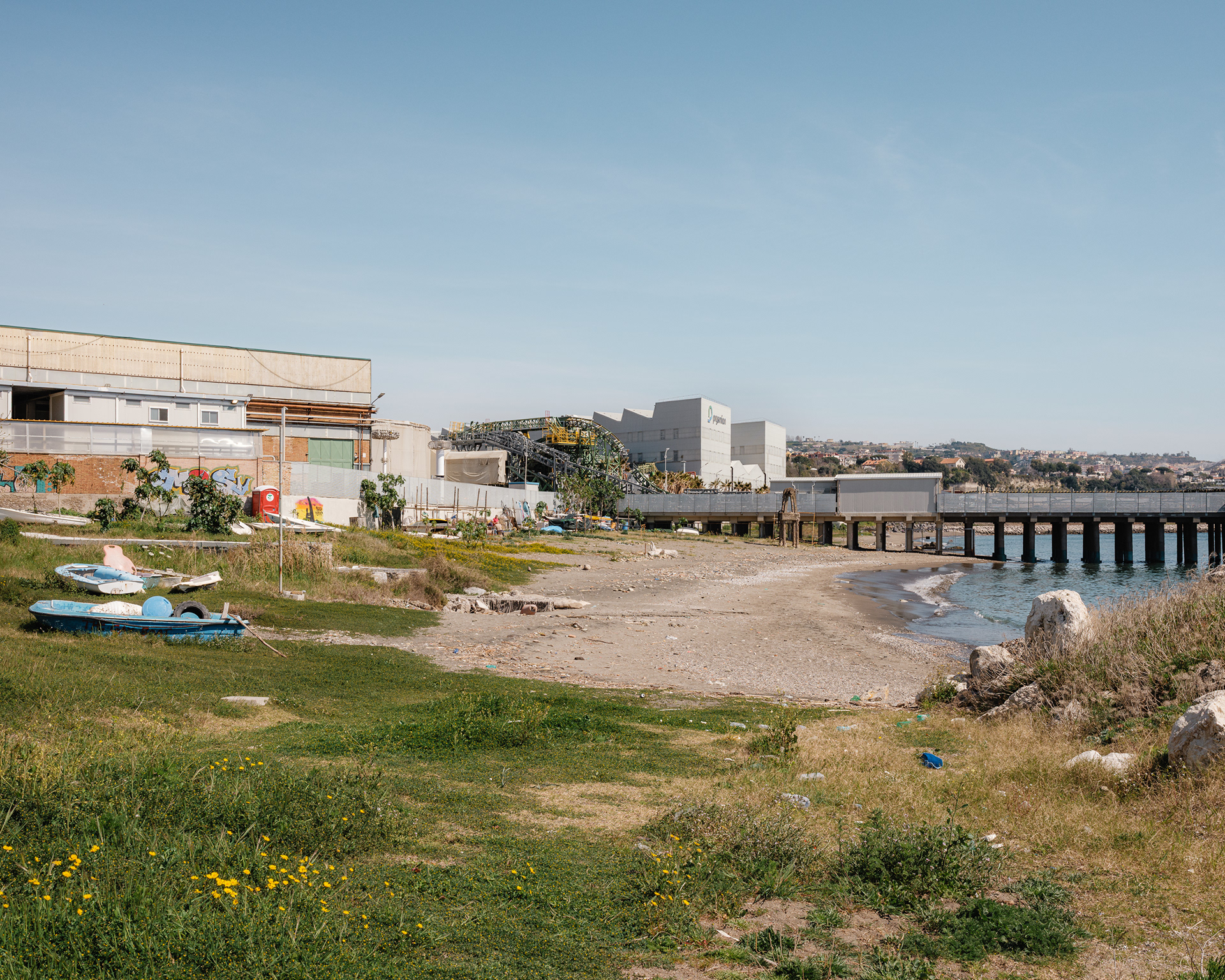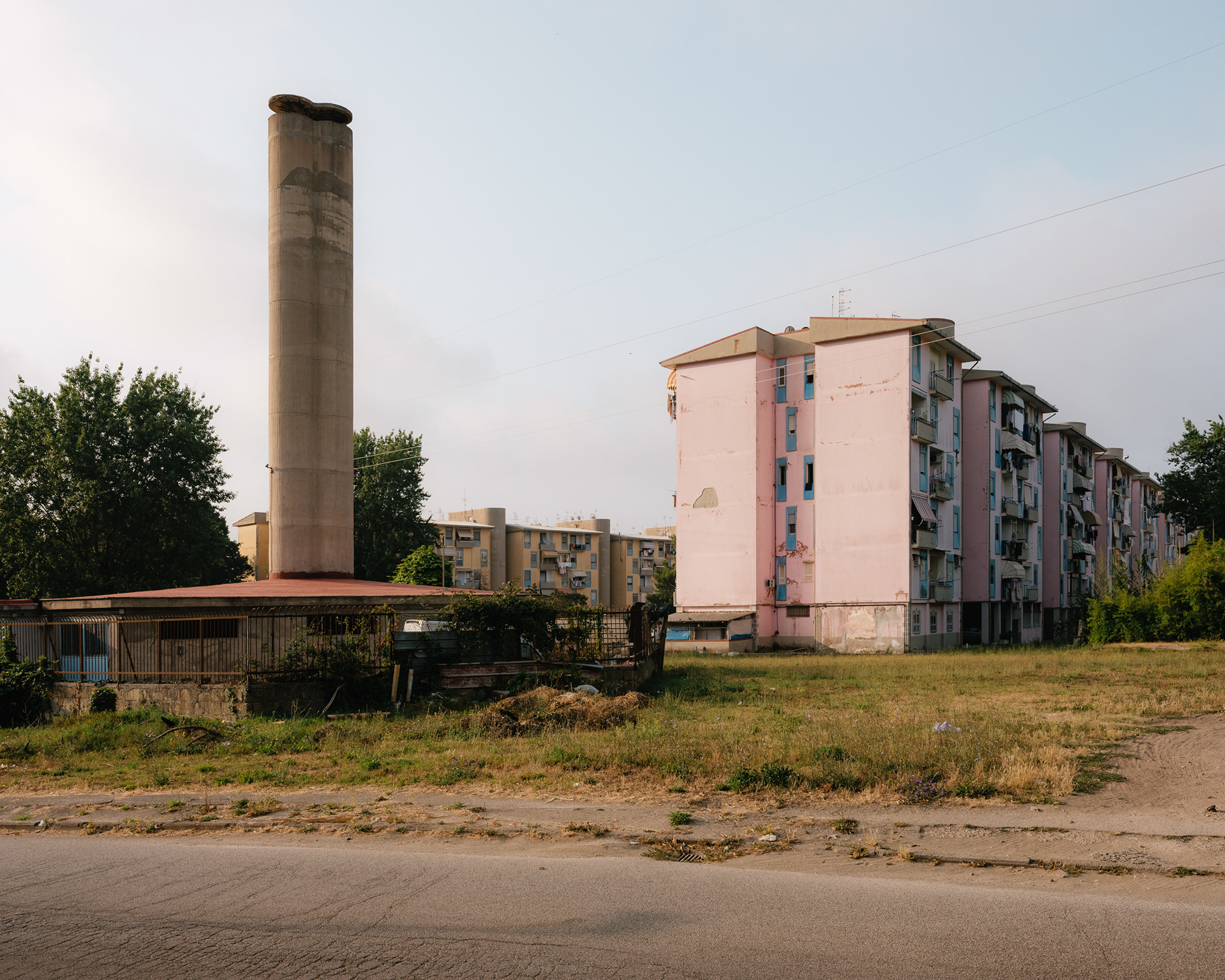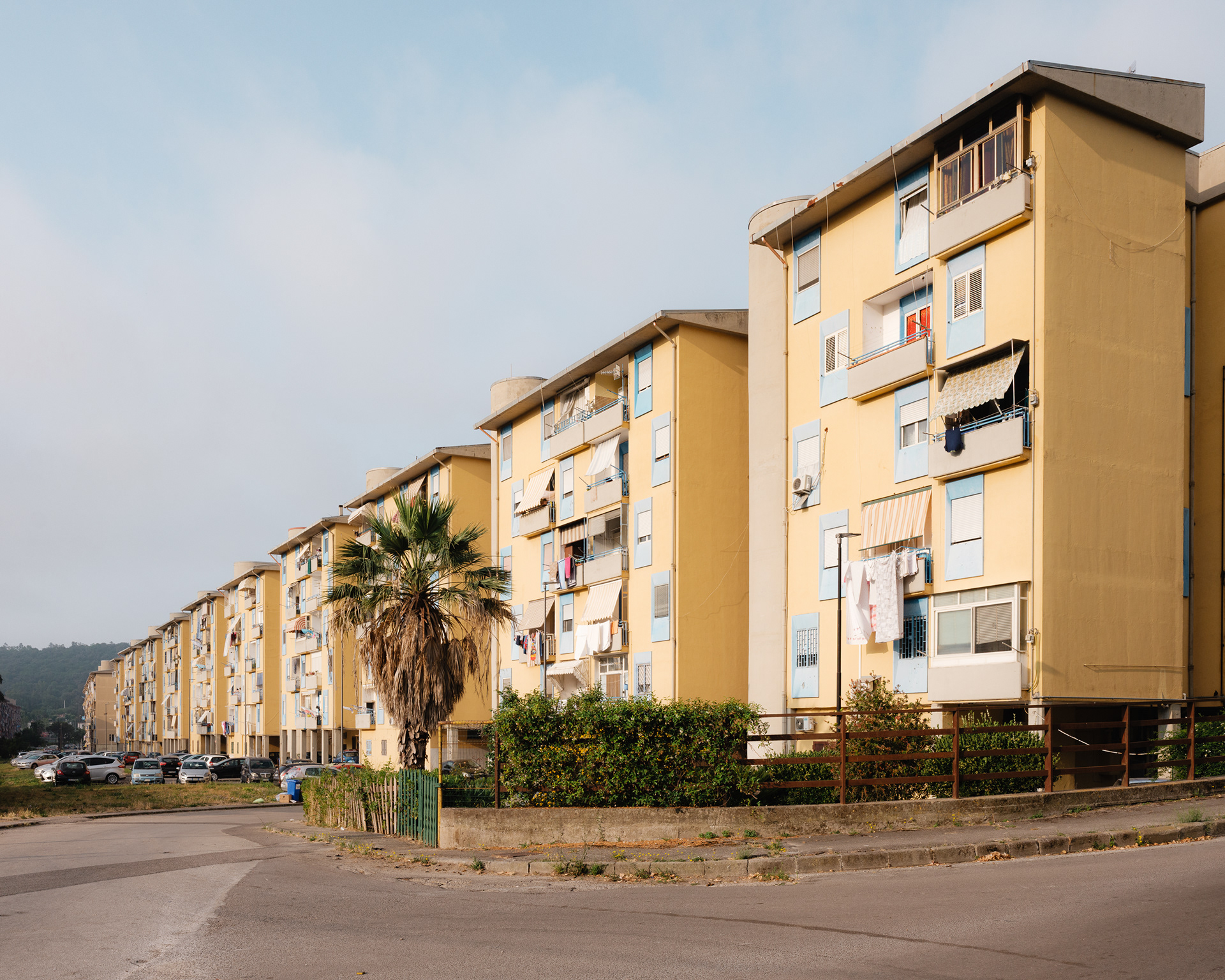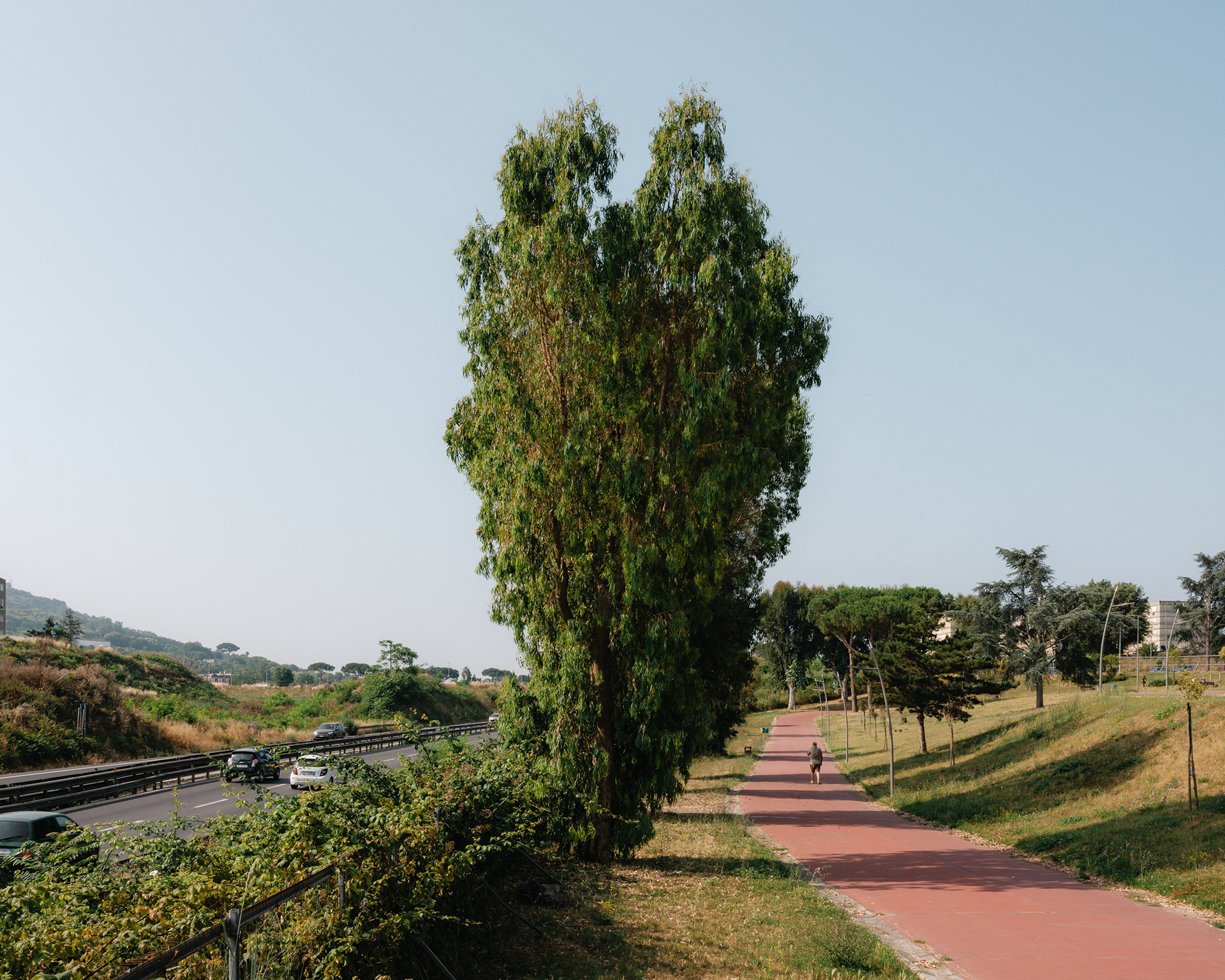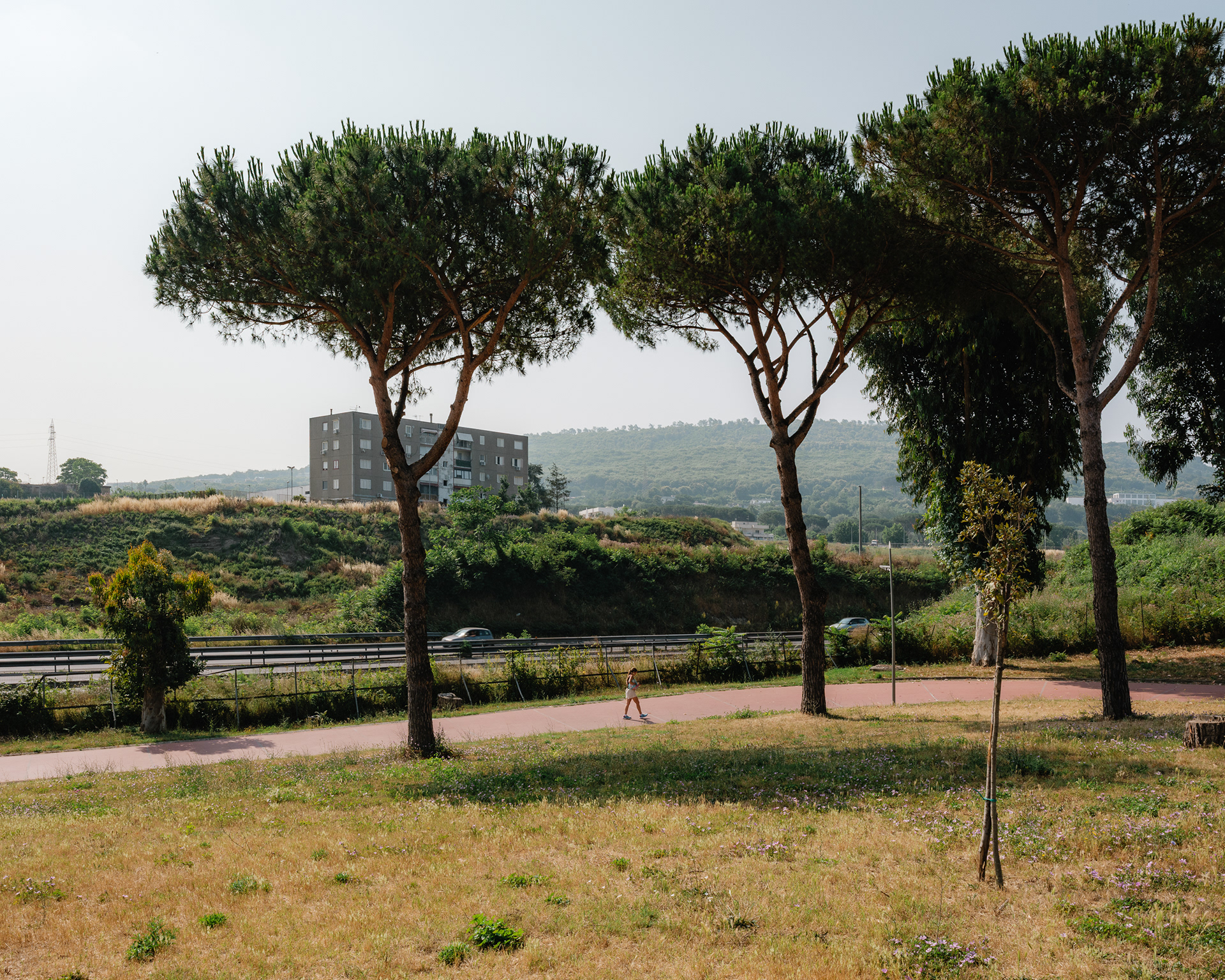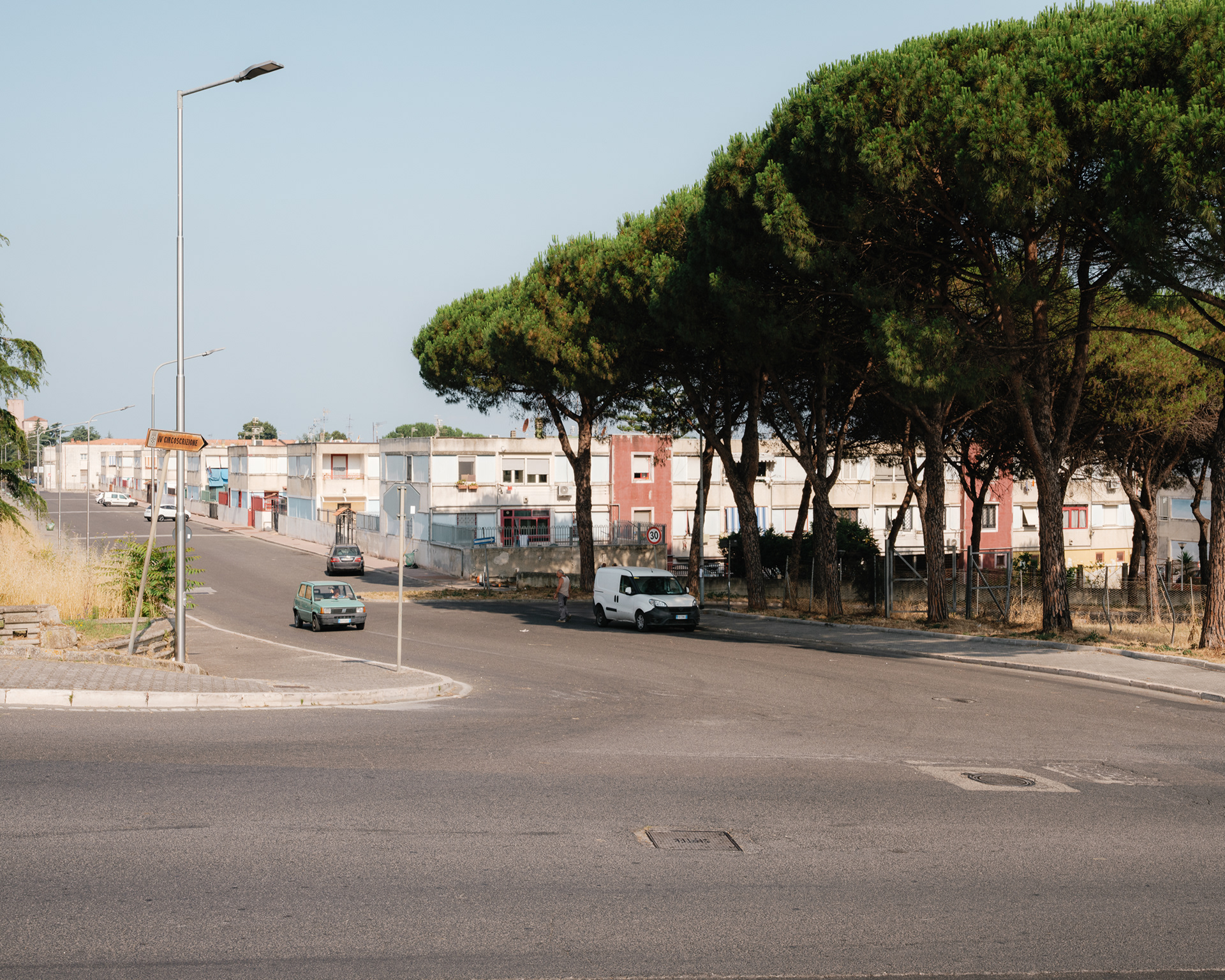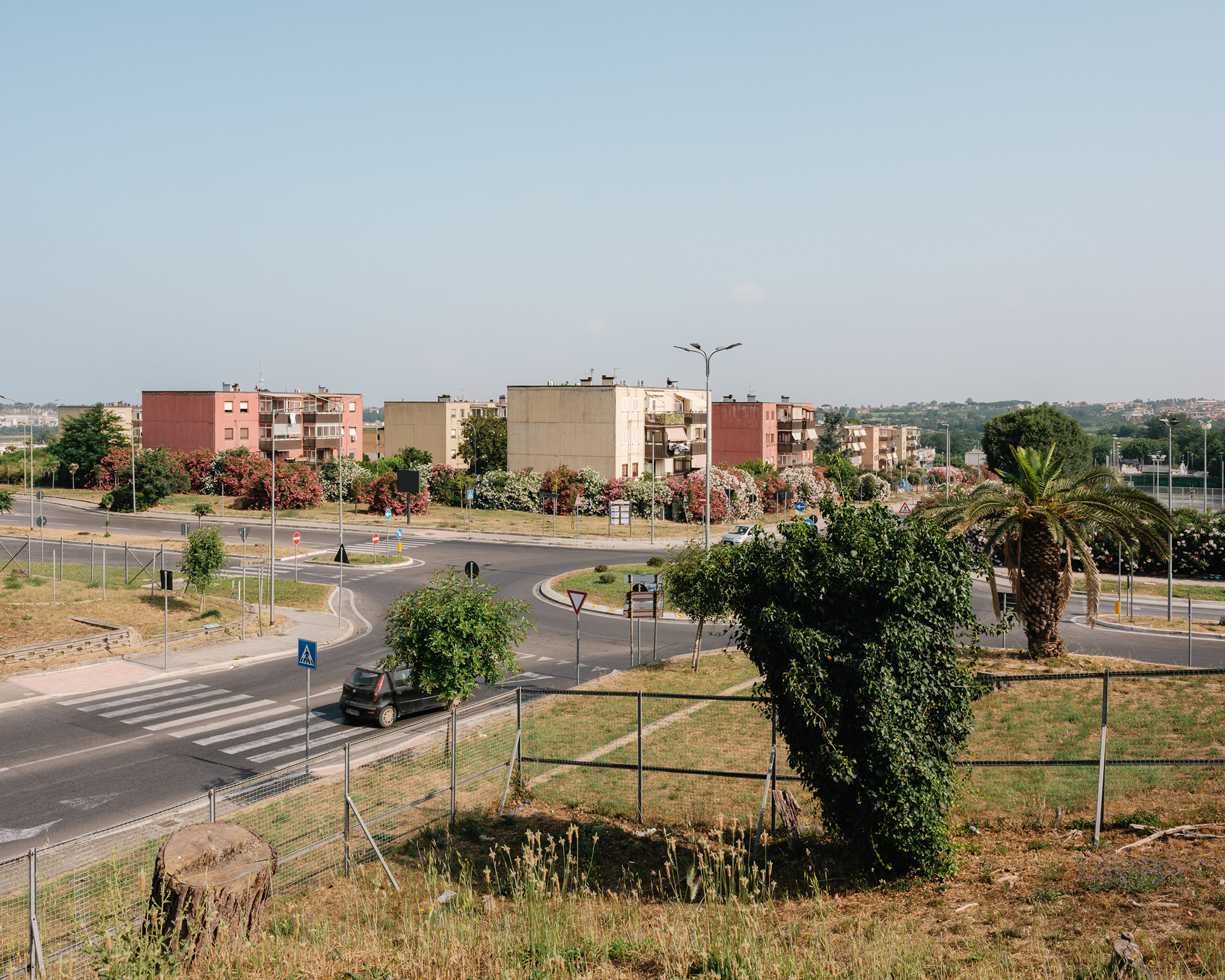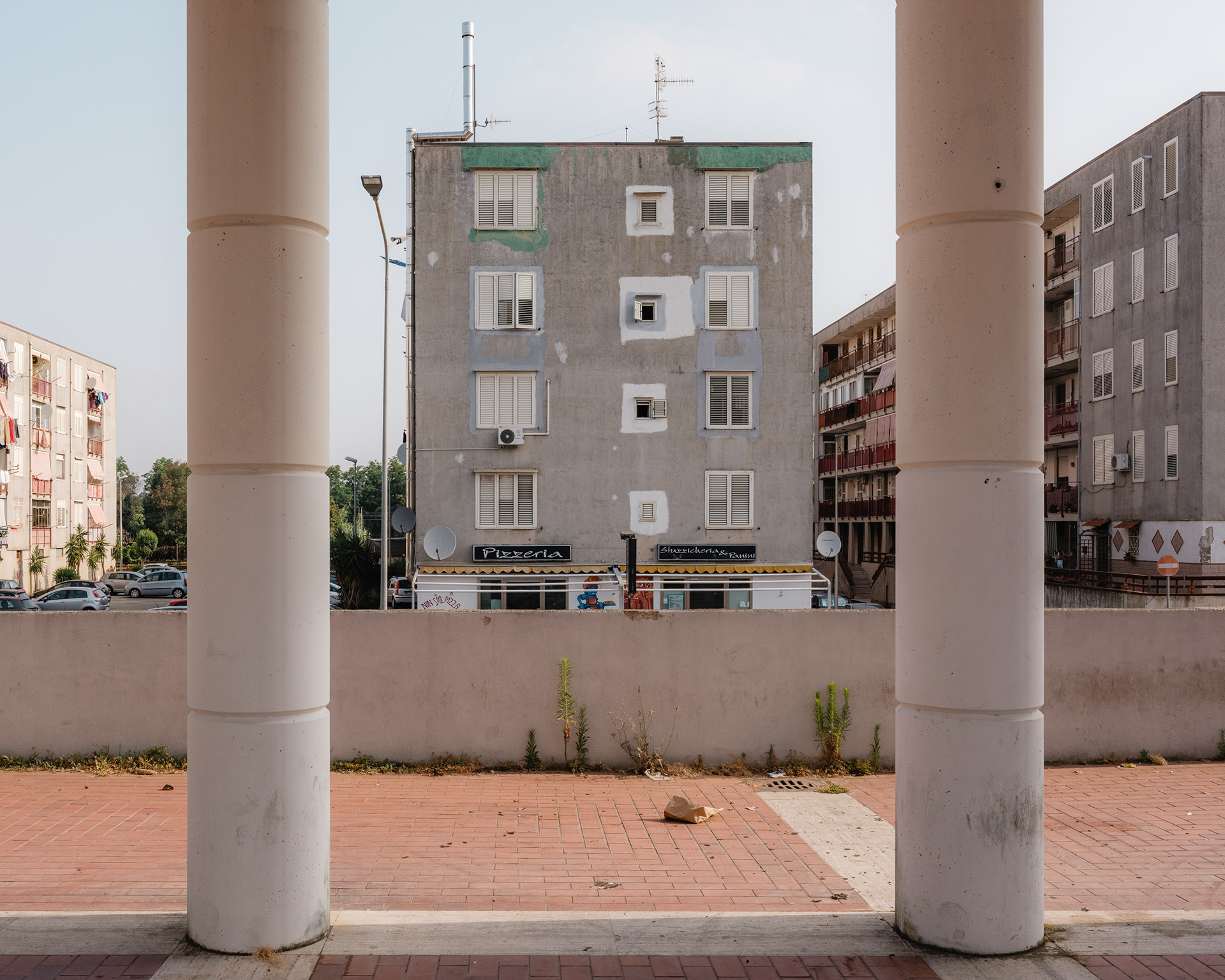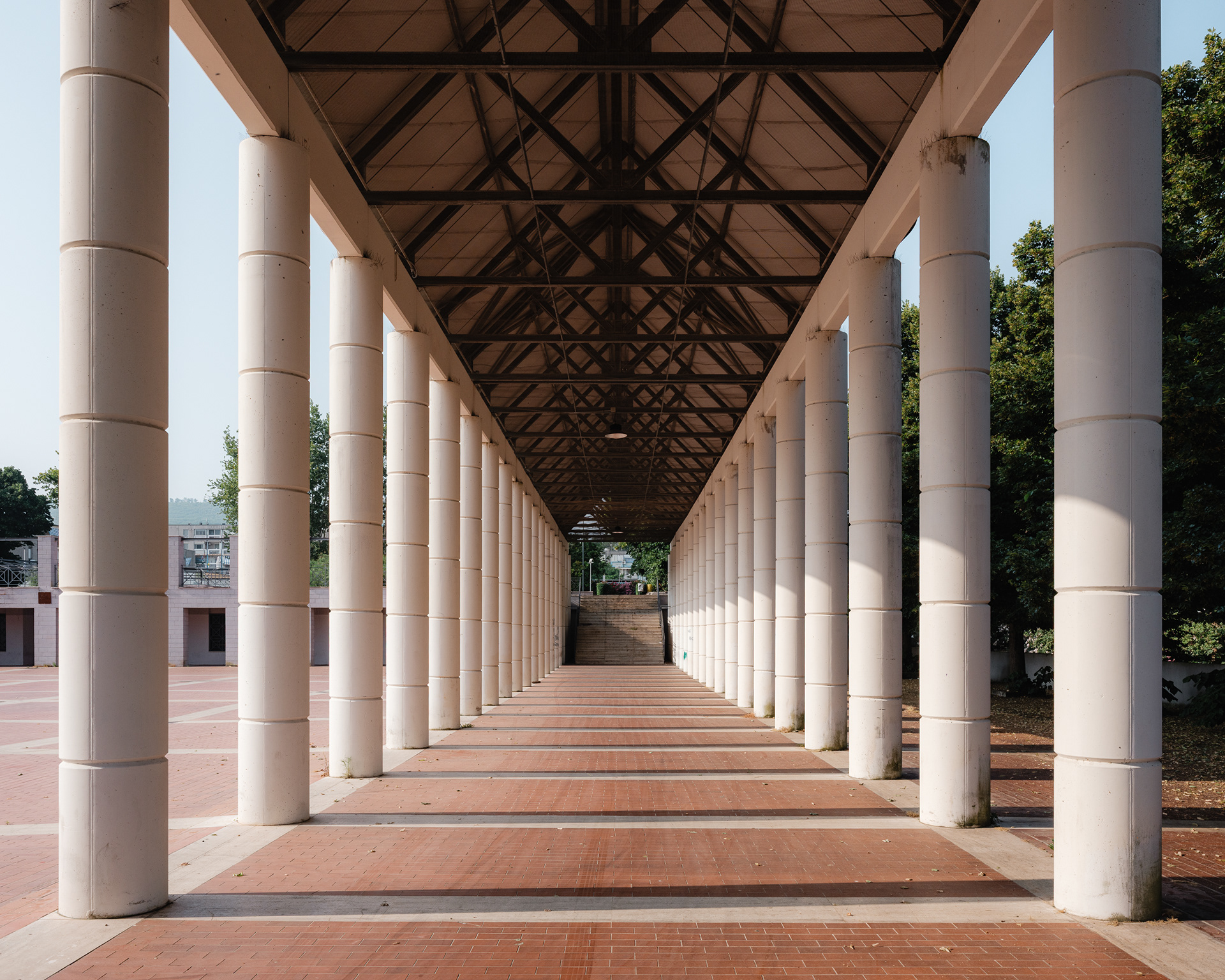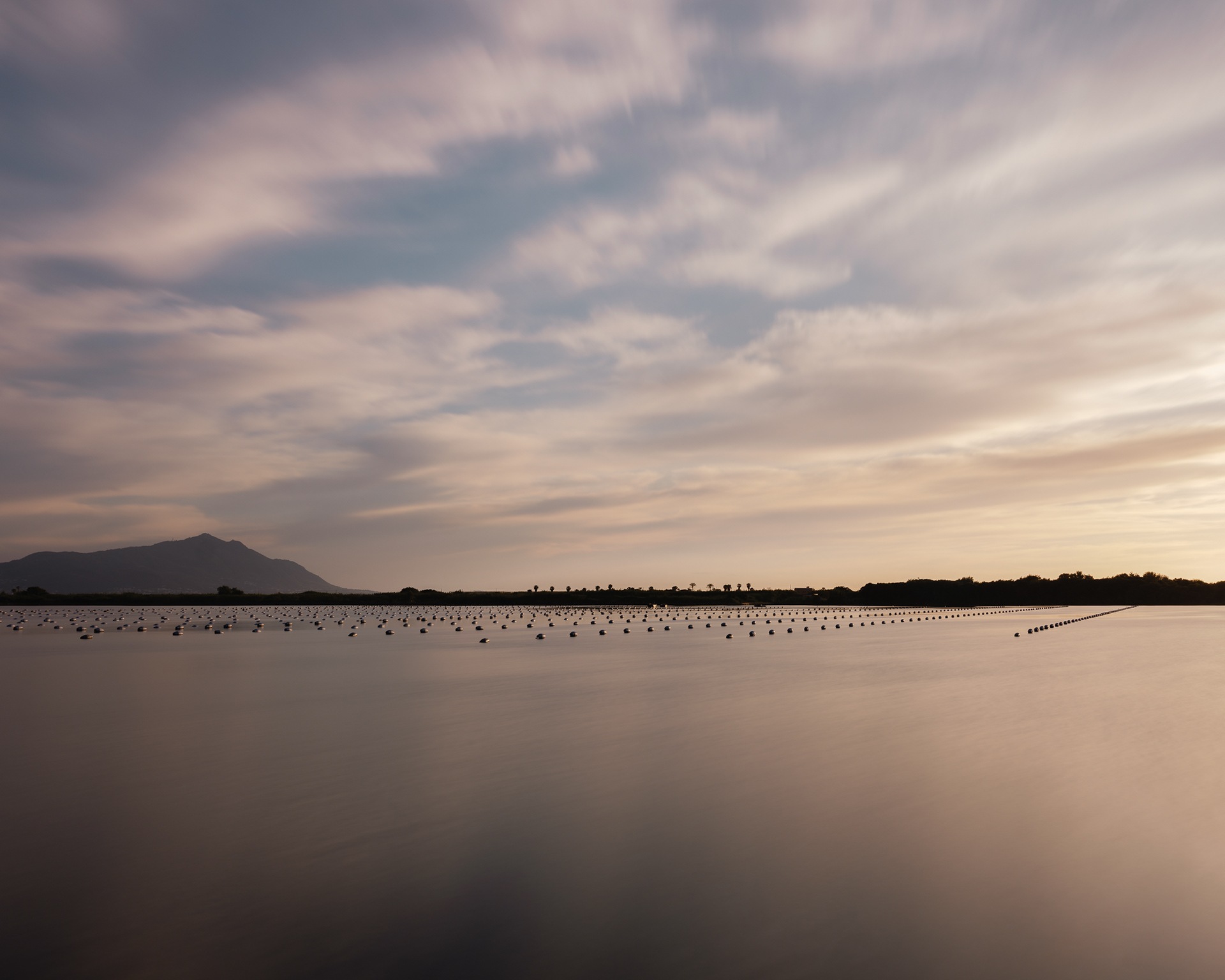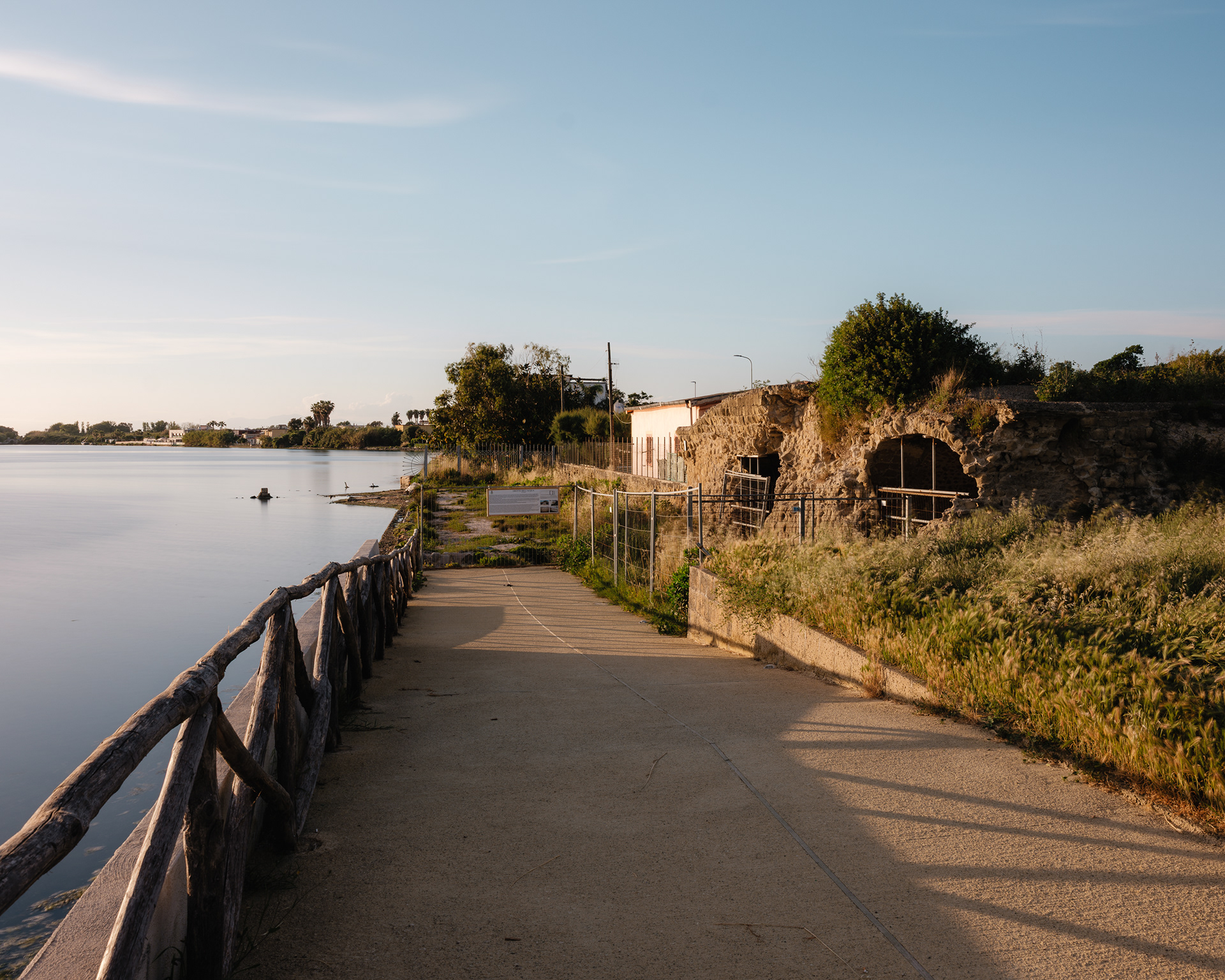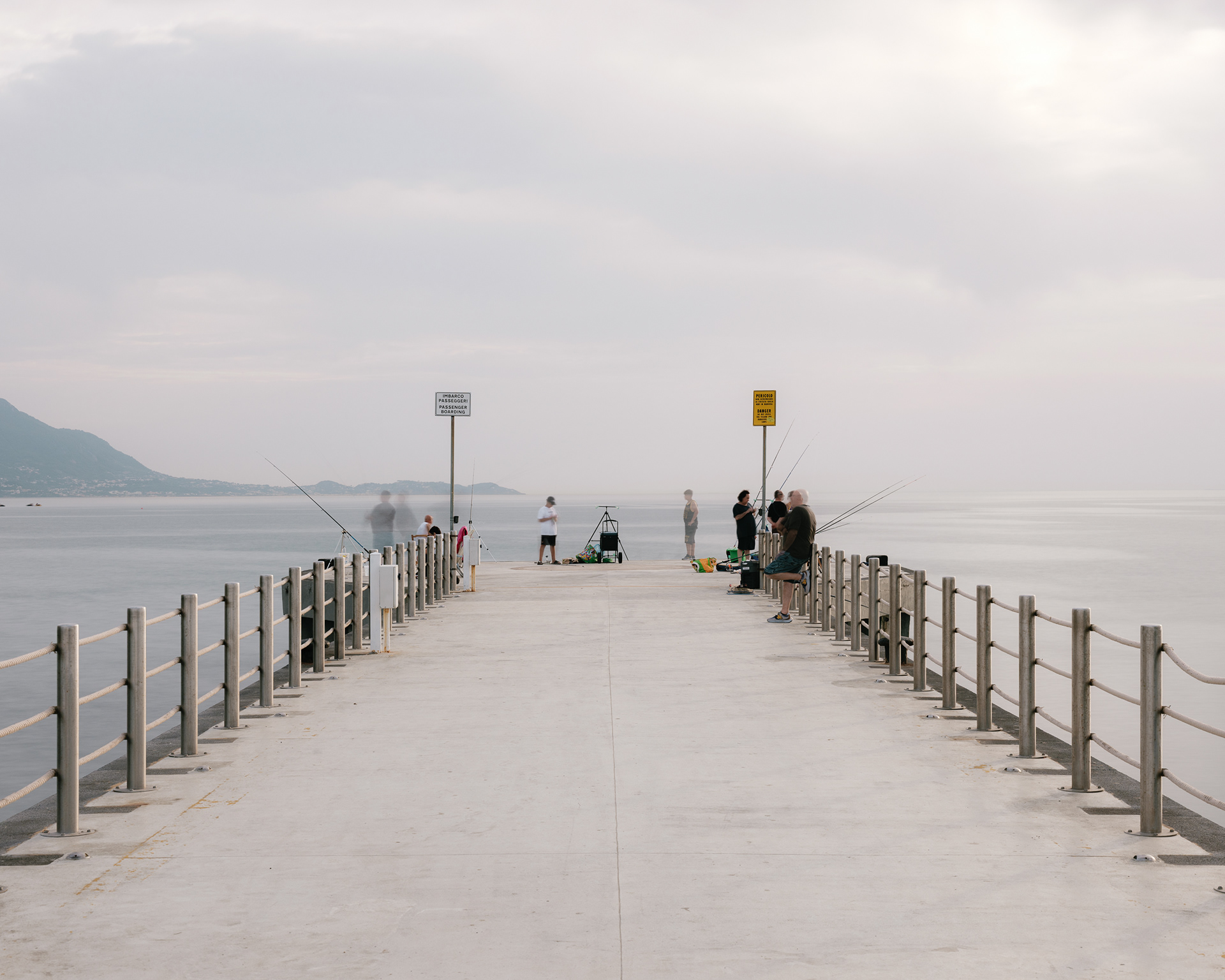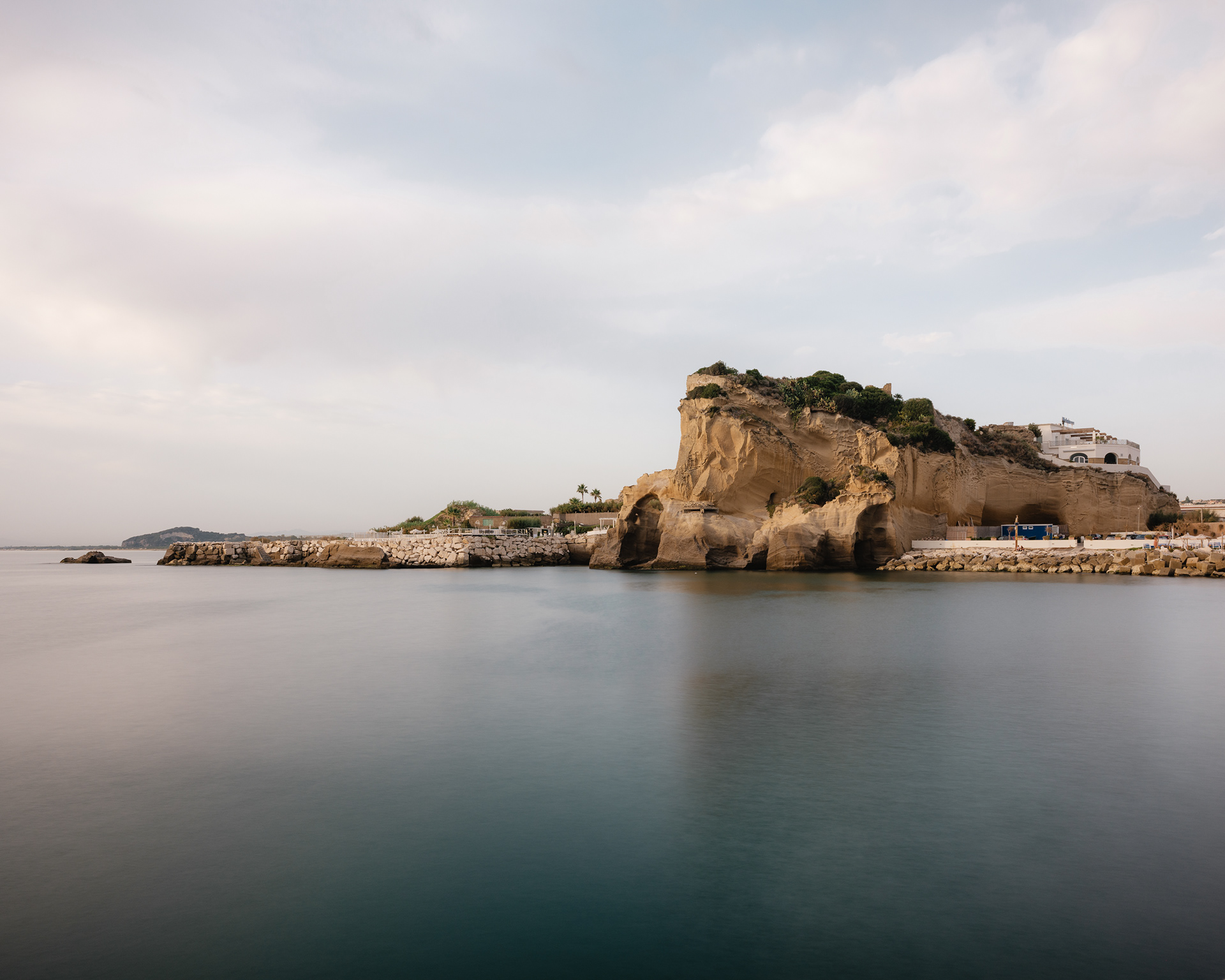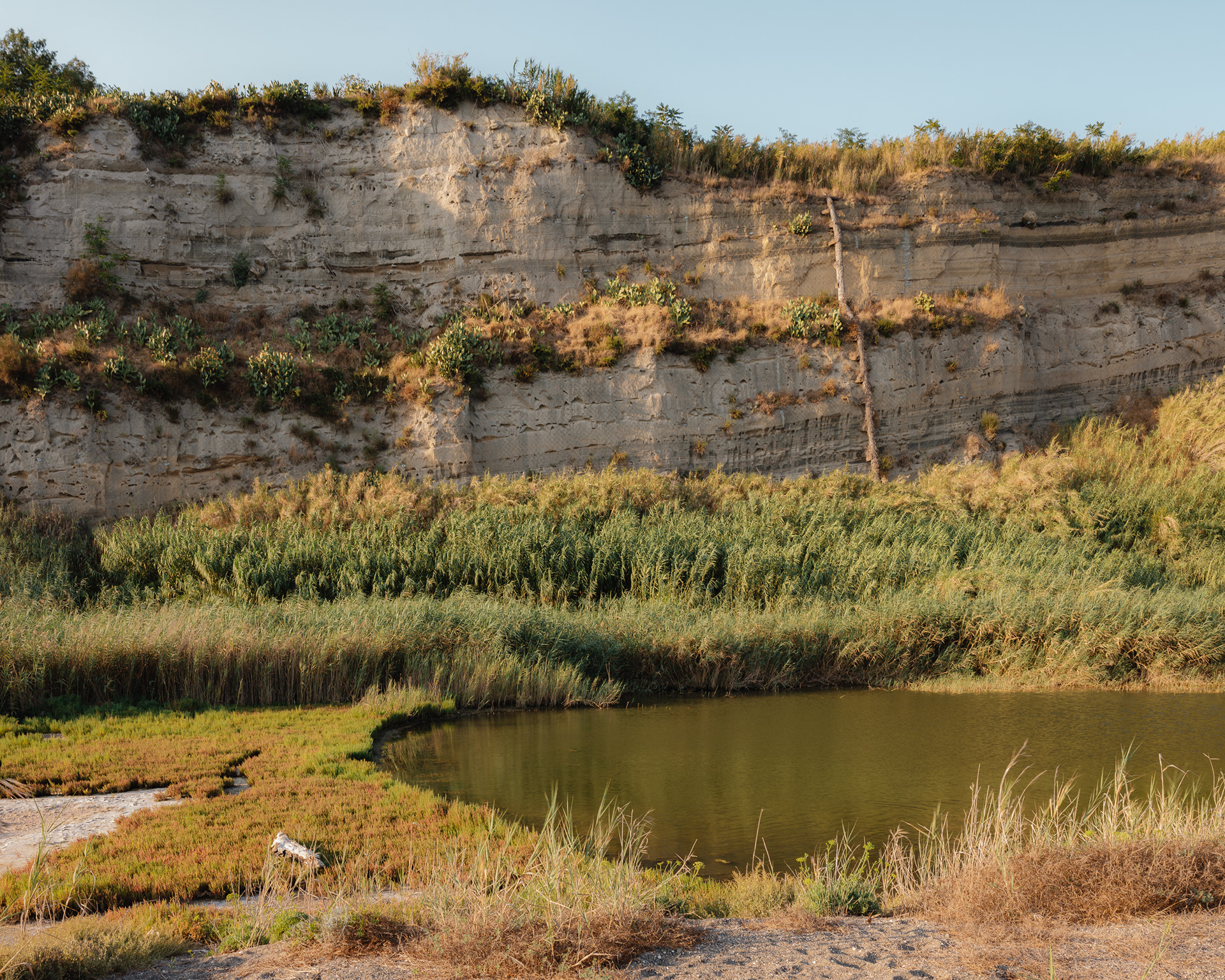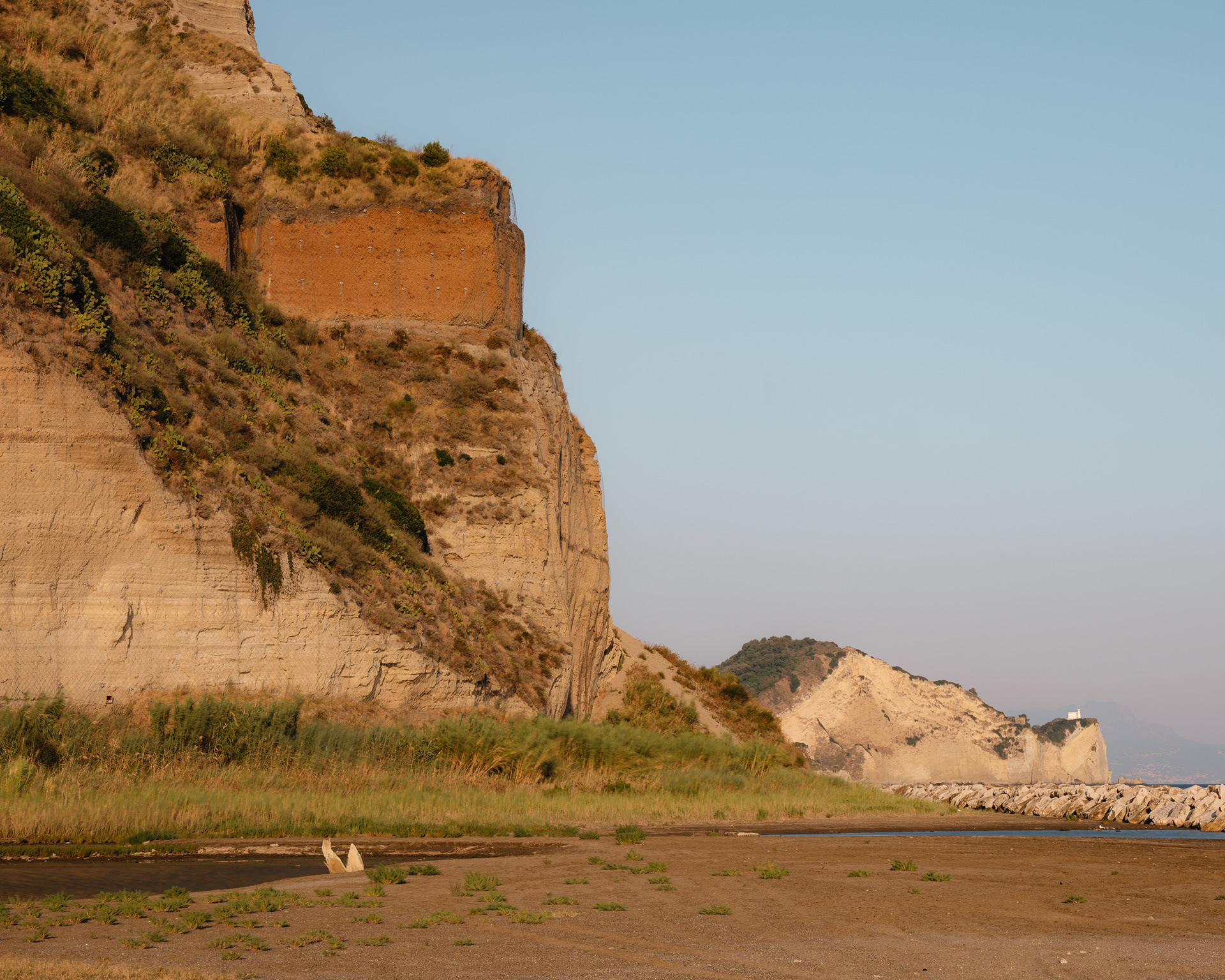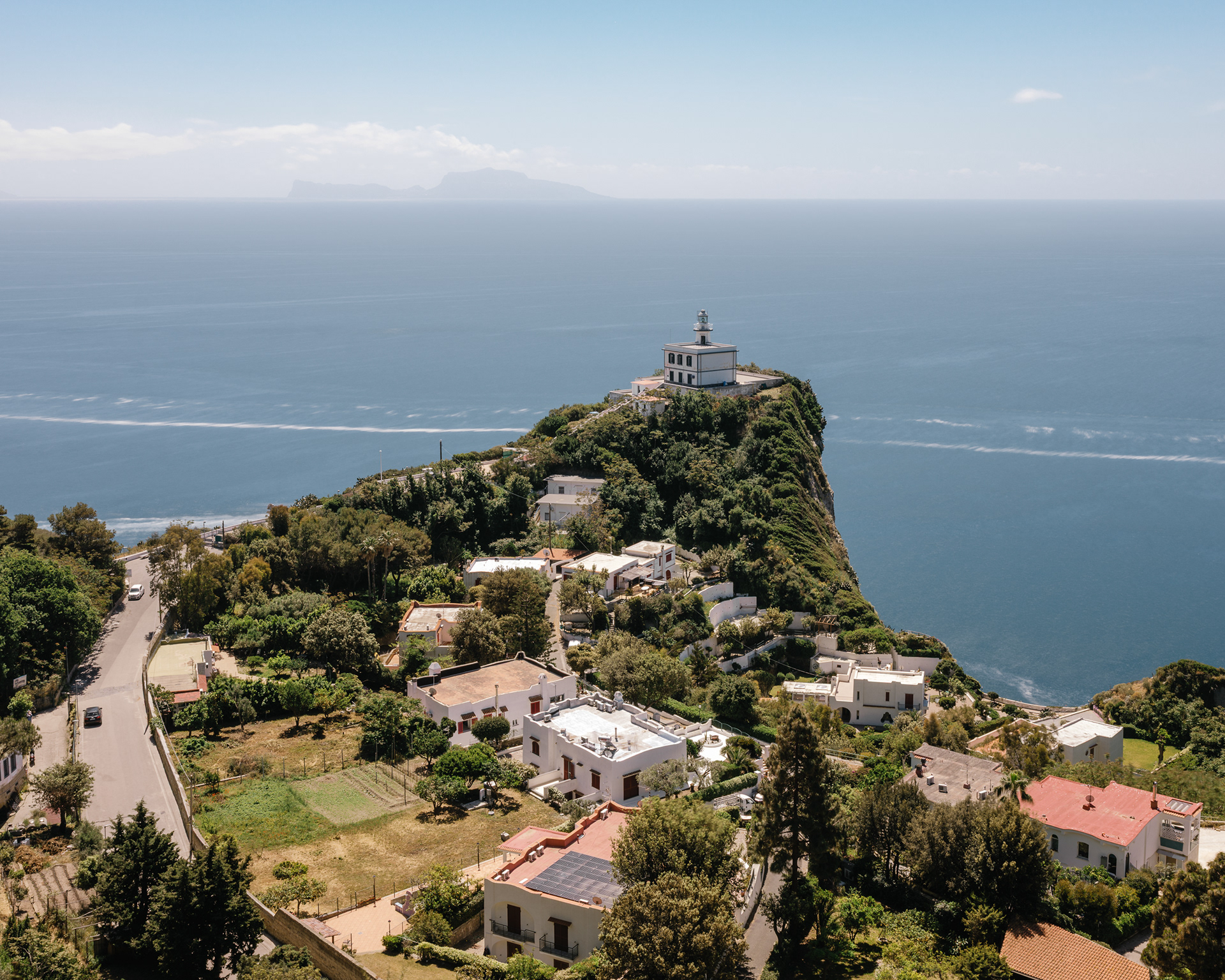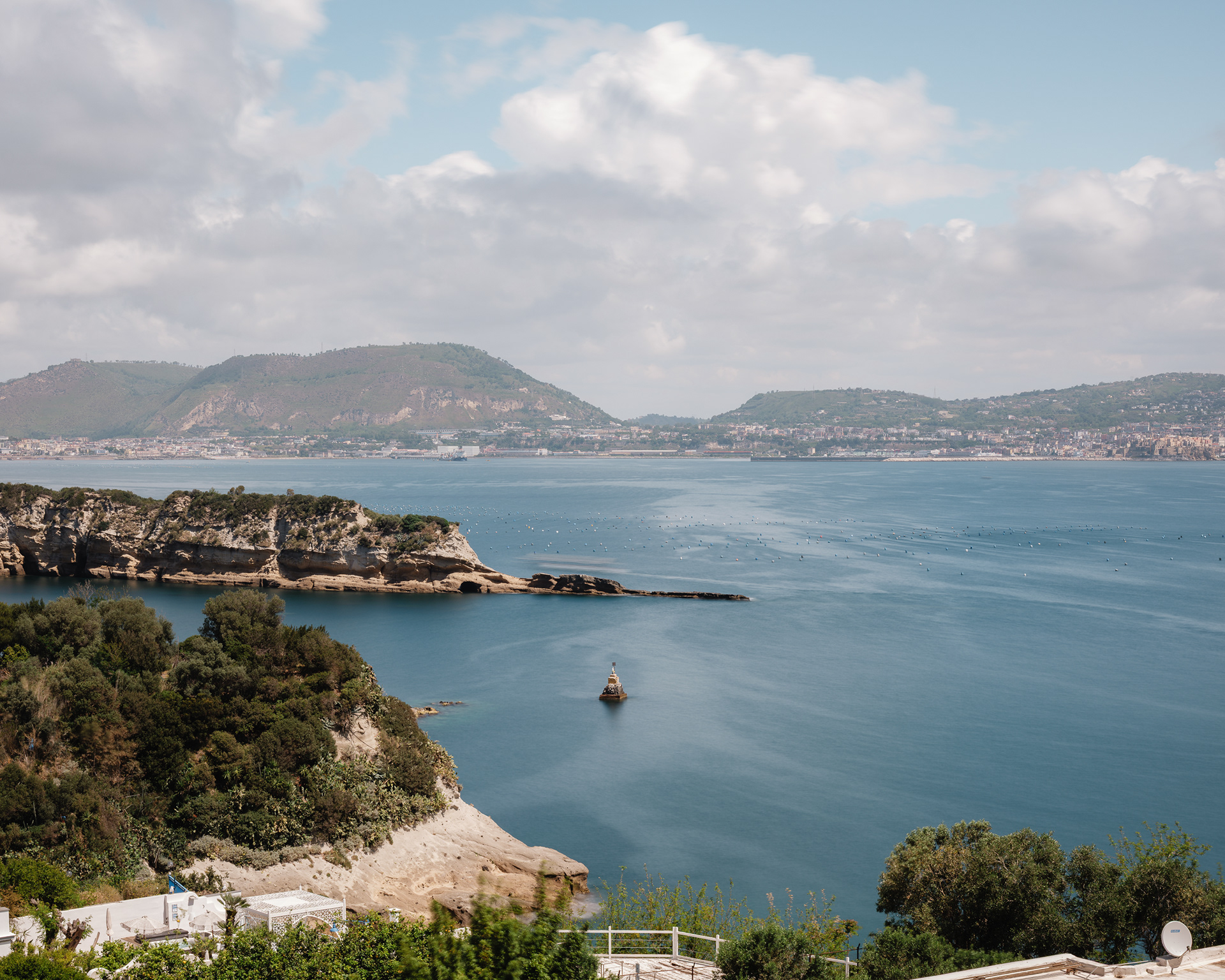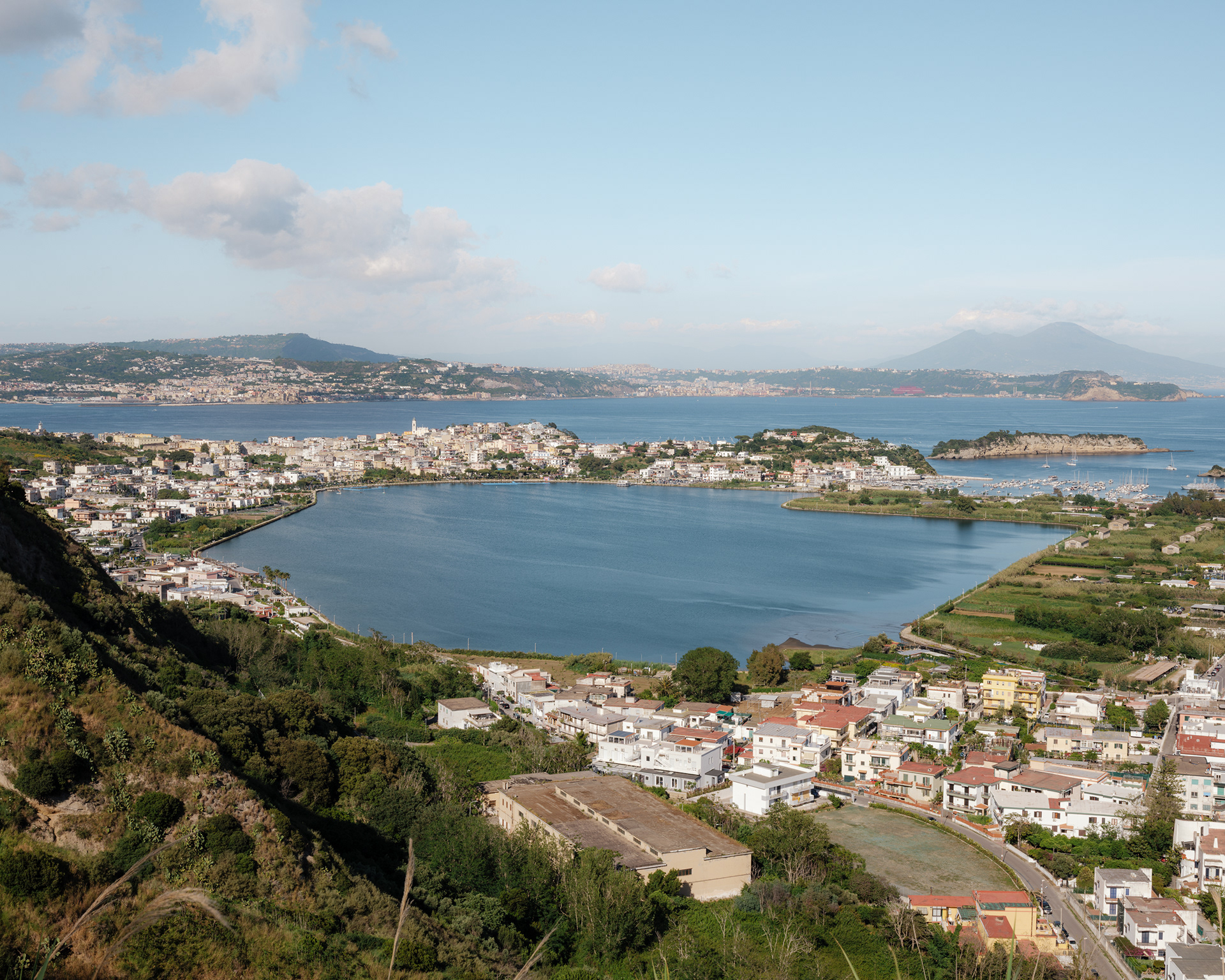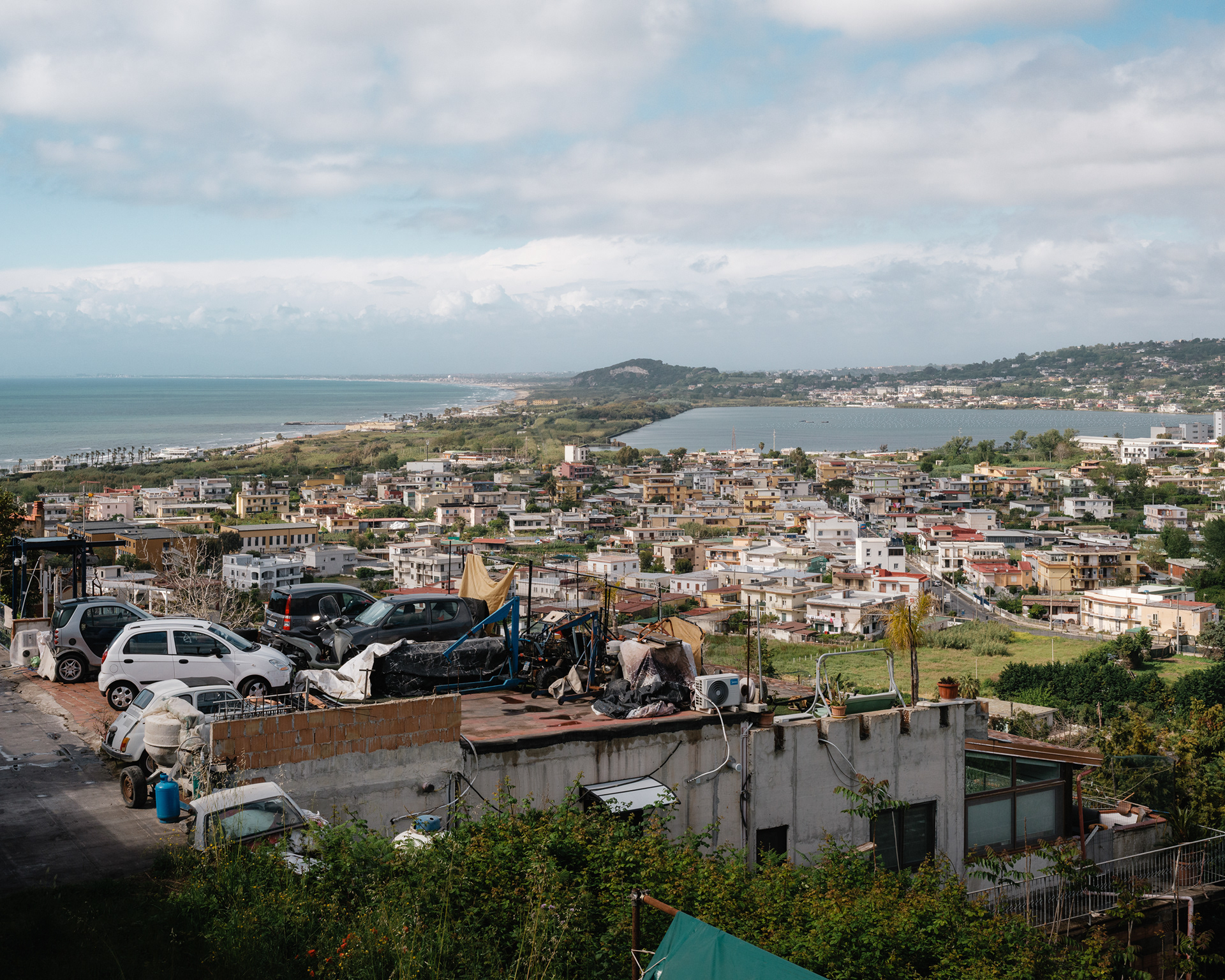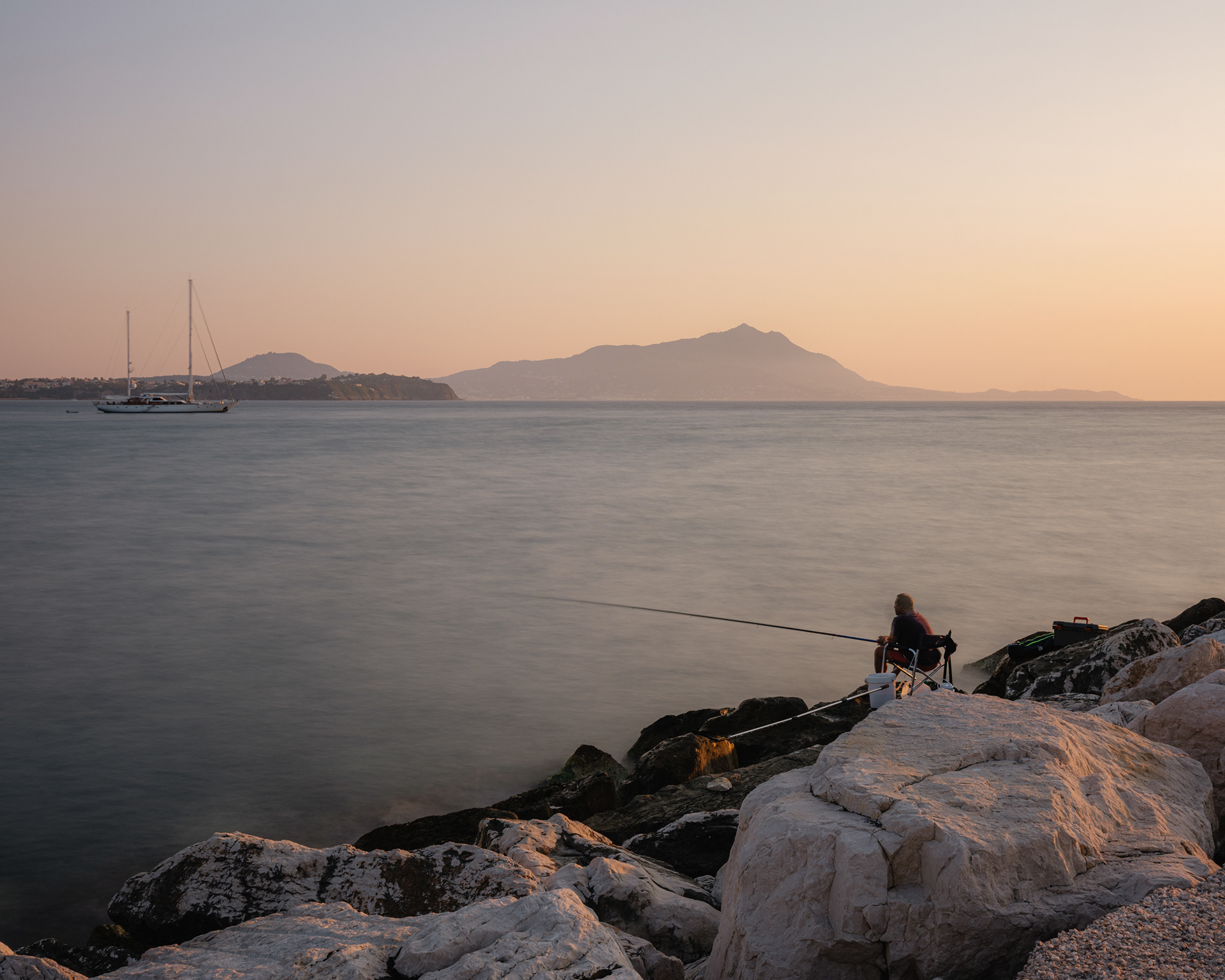Topografie Flegree (2025)
ITA
Topografie Flegree indaga i territori di Bacoli, Pozzuoli e Monte di Procida come paesaggi stratificati, esito della costante interazione tra storia, natura e azione antropica. Lontano da un approccio descrittivo o pittoresco, il progetto concentra lo sguardo sull’ordinario e sulle aree marginali, dove l’intreccio tra urbano, rurale e periurbano si manifesta in forme complesse e frammentate. La prossimità con Napoli colloca questi luoghi in una condizione liminale: spazi che non appartengono pienamente né alla periferia né al centro, ma che si configurano come territori in continua trasformazione. Attraverso accostamenti e relazioni visive, le immagini instaurano un dialogo tra memoria e mutamento, tra permanenza e precarietà, restituendo le tensioni che definiscono l’identità del paesaggio flegreo. Le fotografie si offrono come una mappa visiva, uno strumento di lettura e interrogazione del territorio, capace di riflettere sul modo in cui l’uomo modella, altera e ridefinisce incessantemente lo spazio che abita, rivelando la fragilità dell’equilibrio tra permanenza e trasformazione.
EN
Topografie Flegree explores the territories of Bacoli, Pozzuoli and Monte di Procida as stratified landscapes, the result of the constant interaction between history, nature, and human action. Far from a descriptive or picturesque approach, the project focuses on the ordinary and on marginal areas, where the intersection of urban, rural, and peri-urban environments emerges in complex and fragmented forms. Their proximity to Naples places these places in a liminal condition: spaces that belong neither fully to the periphery nor to the center, yet exist in a state of continuous transformation. Through visual juxtapositions and relationships, the images establish a dialogue between memory and change, between permanence and fragility, reflecting the tensions that define the identity of the Phlegraean landscape. The photographs unfold as a visual map, a tool for reading and questioning the territory, revealing how humans continuously shape, alter, and redefine the spaces they inhabit, and exposing the delicate balance between permanence and transformation.
